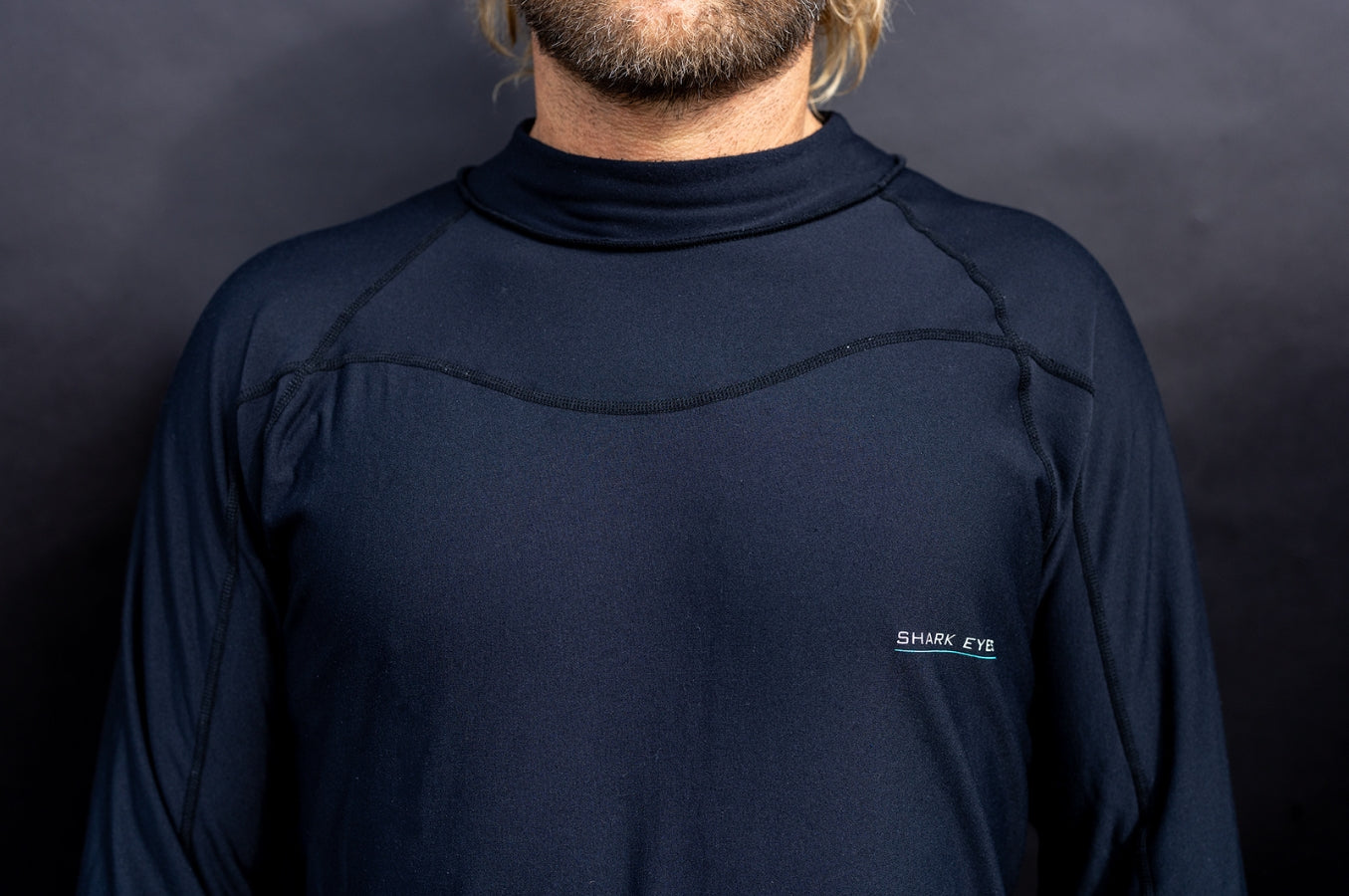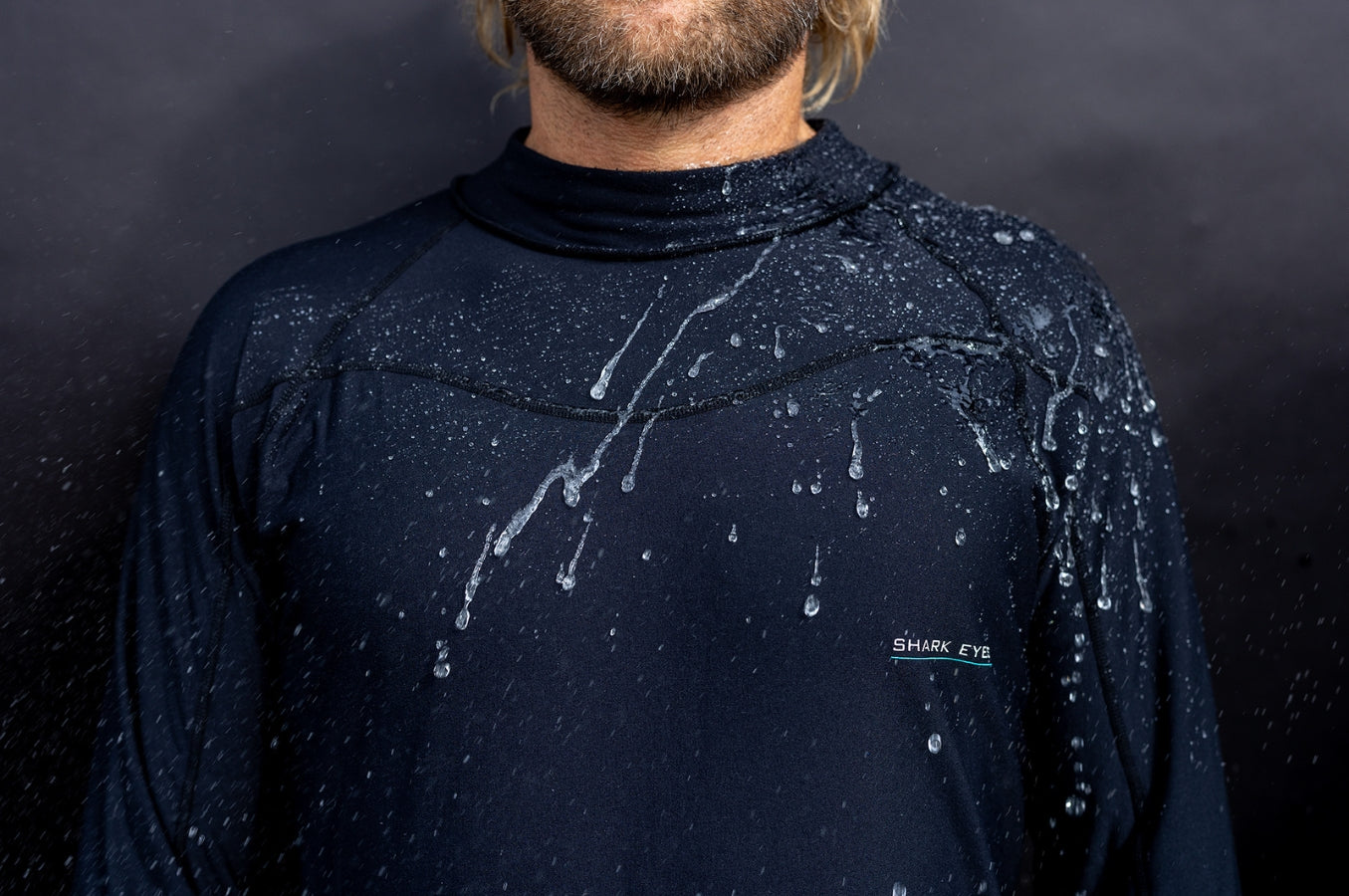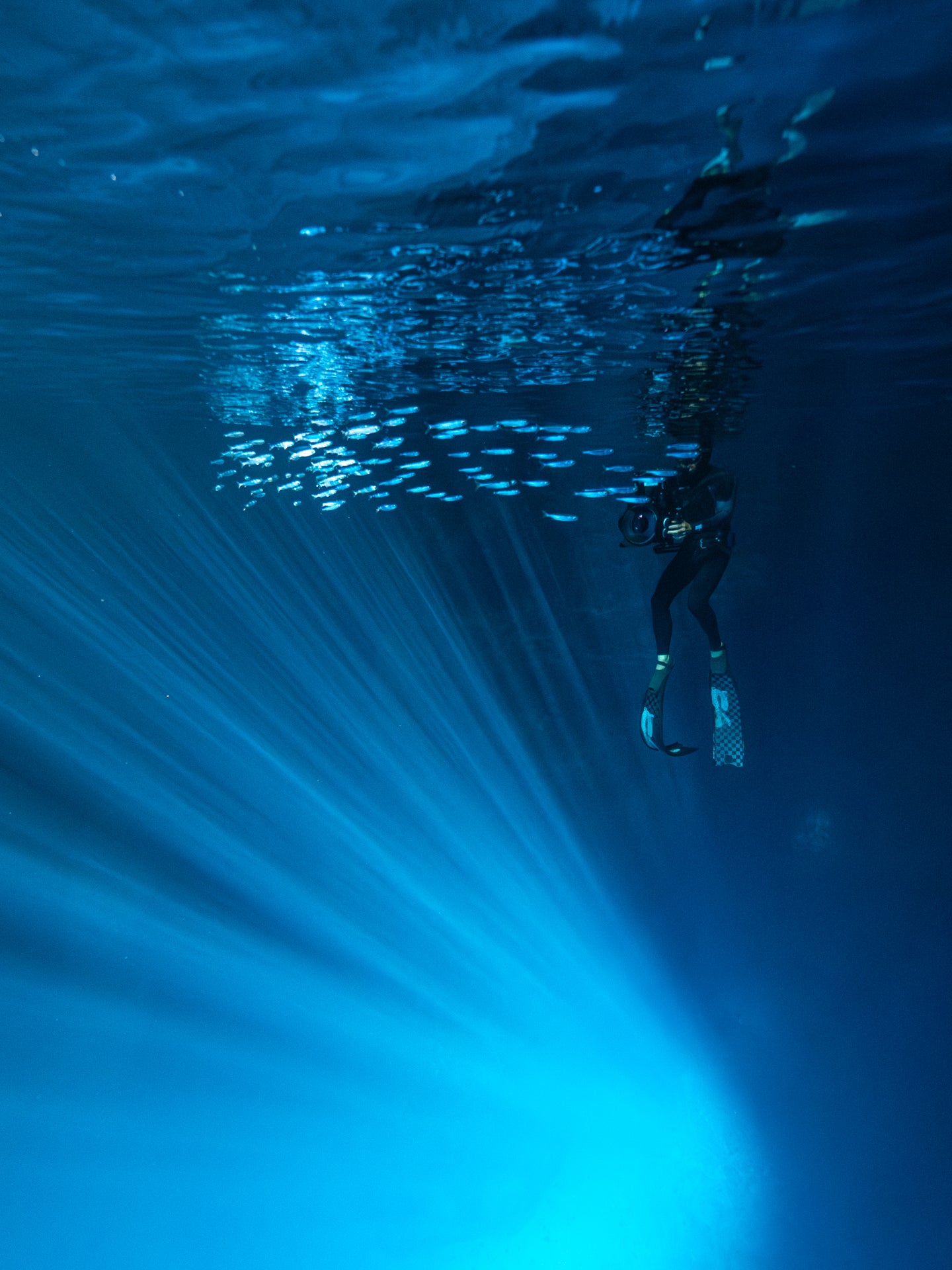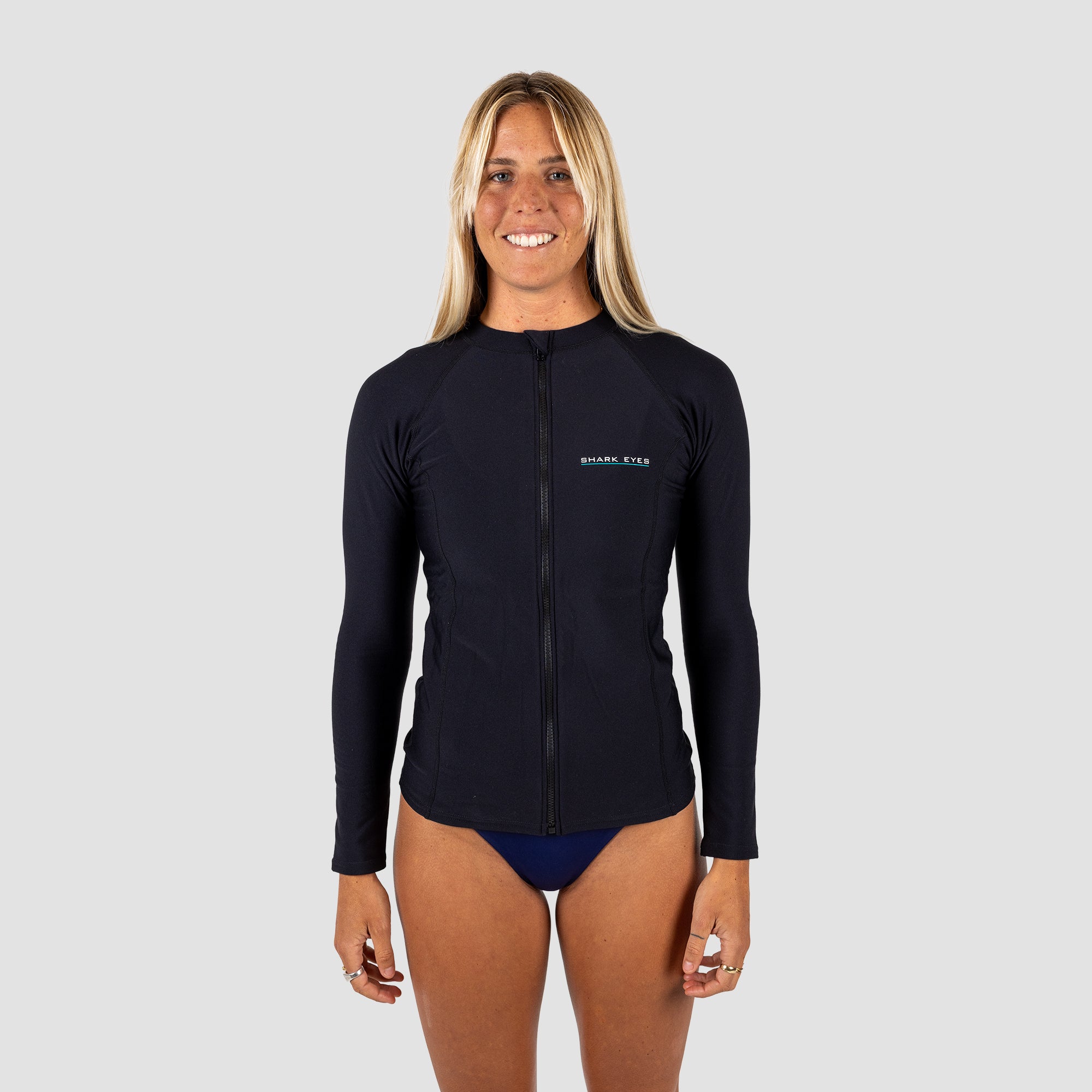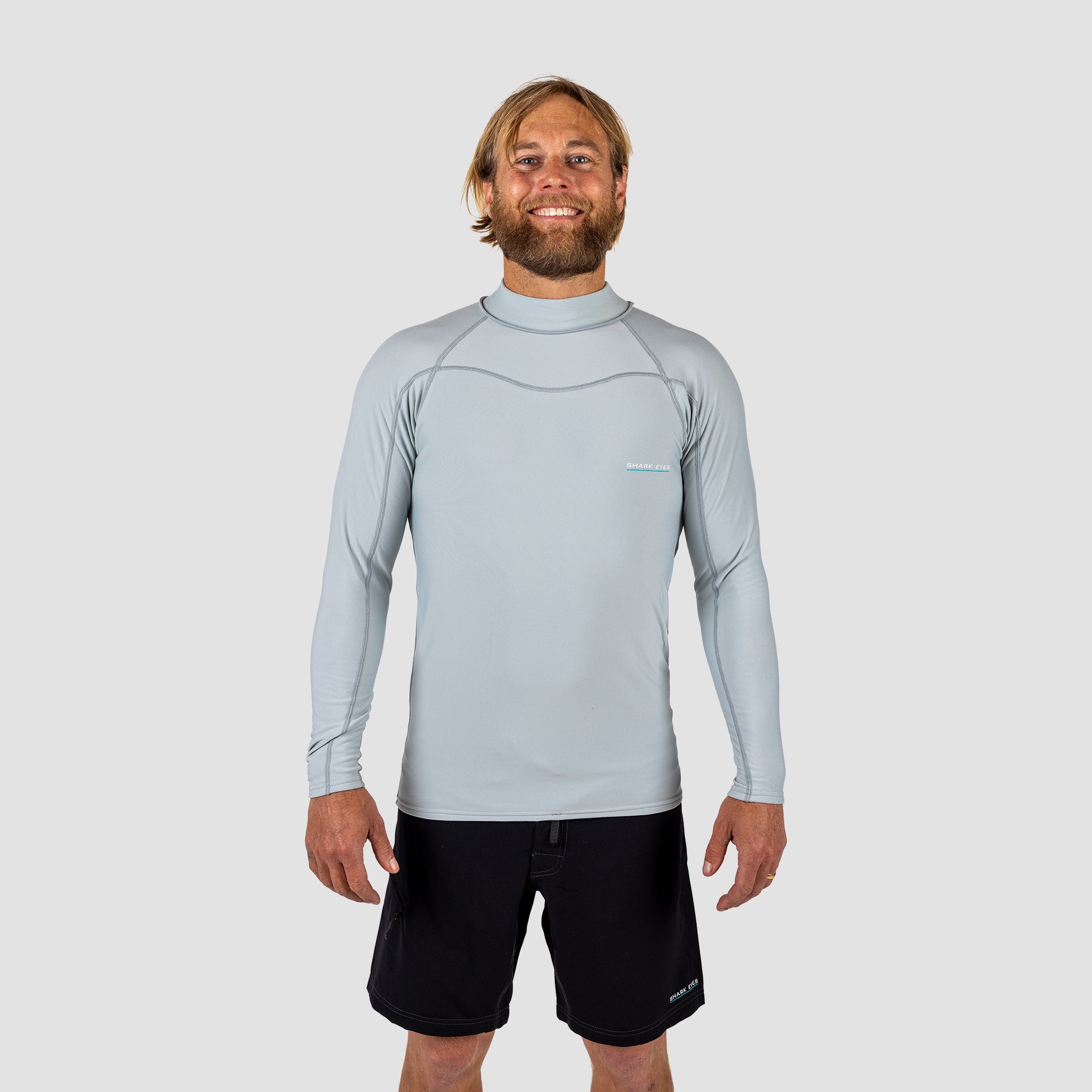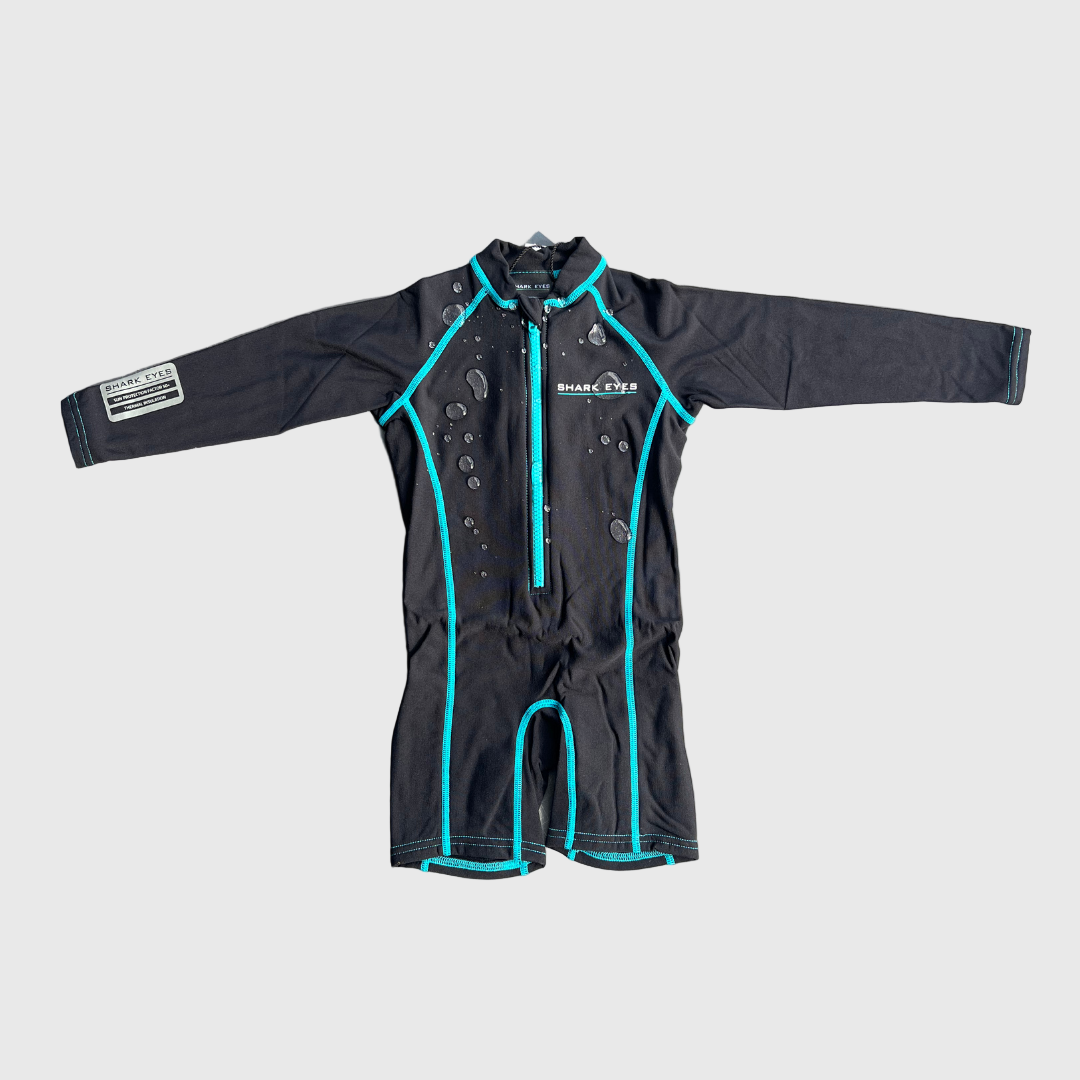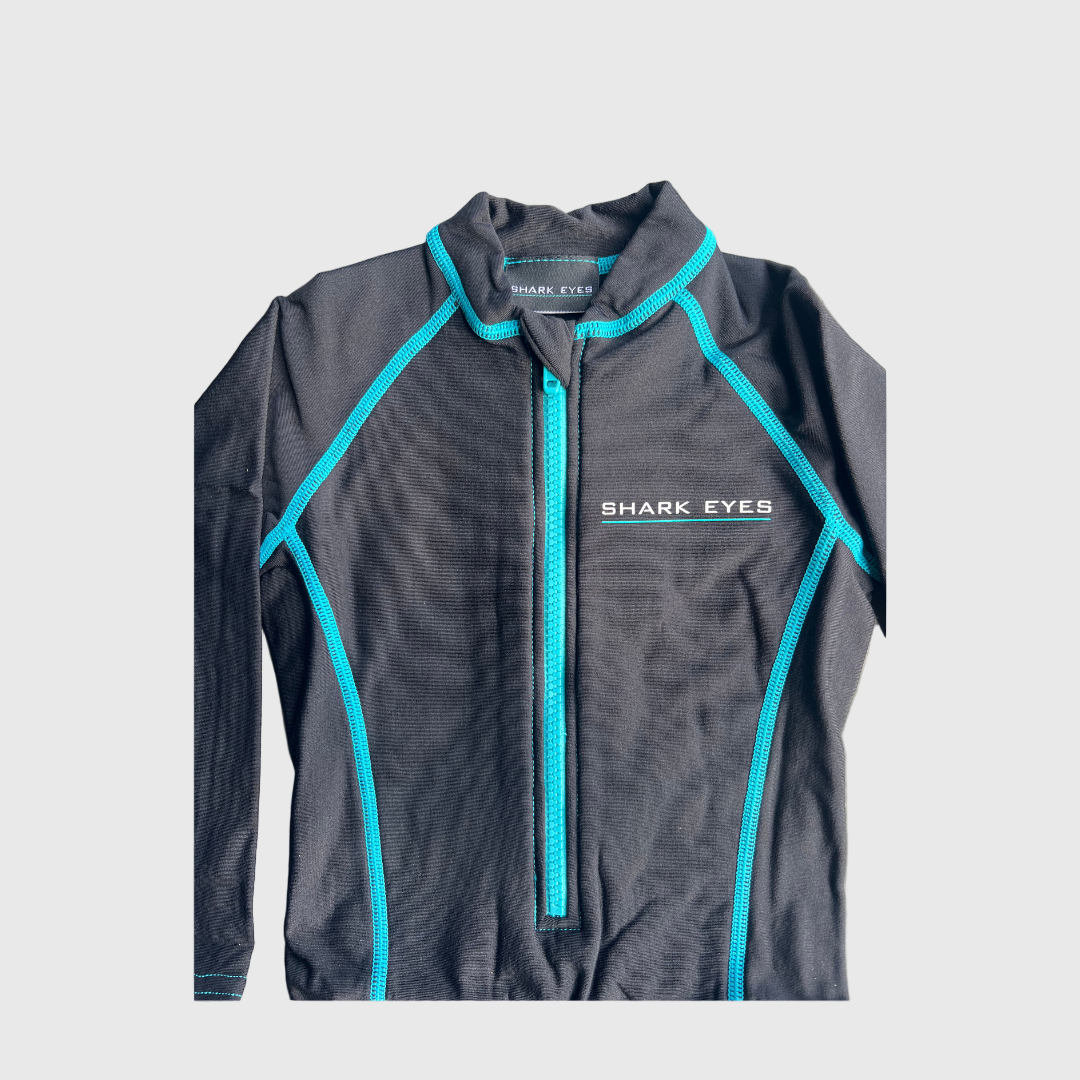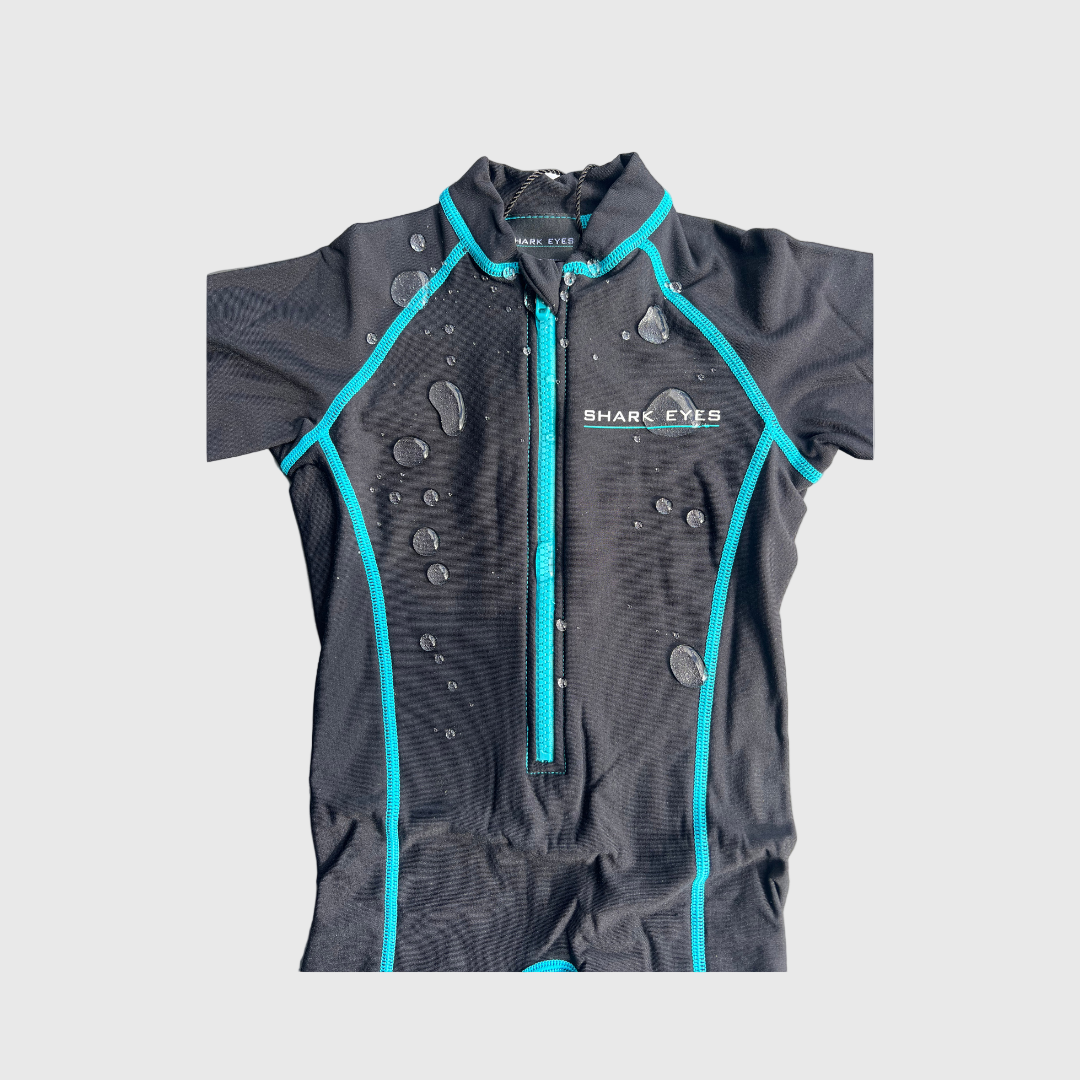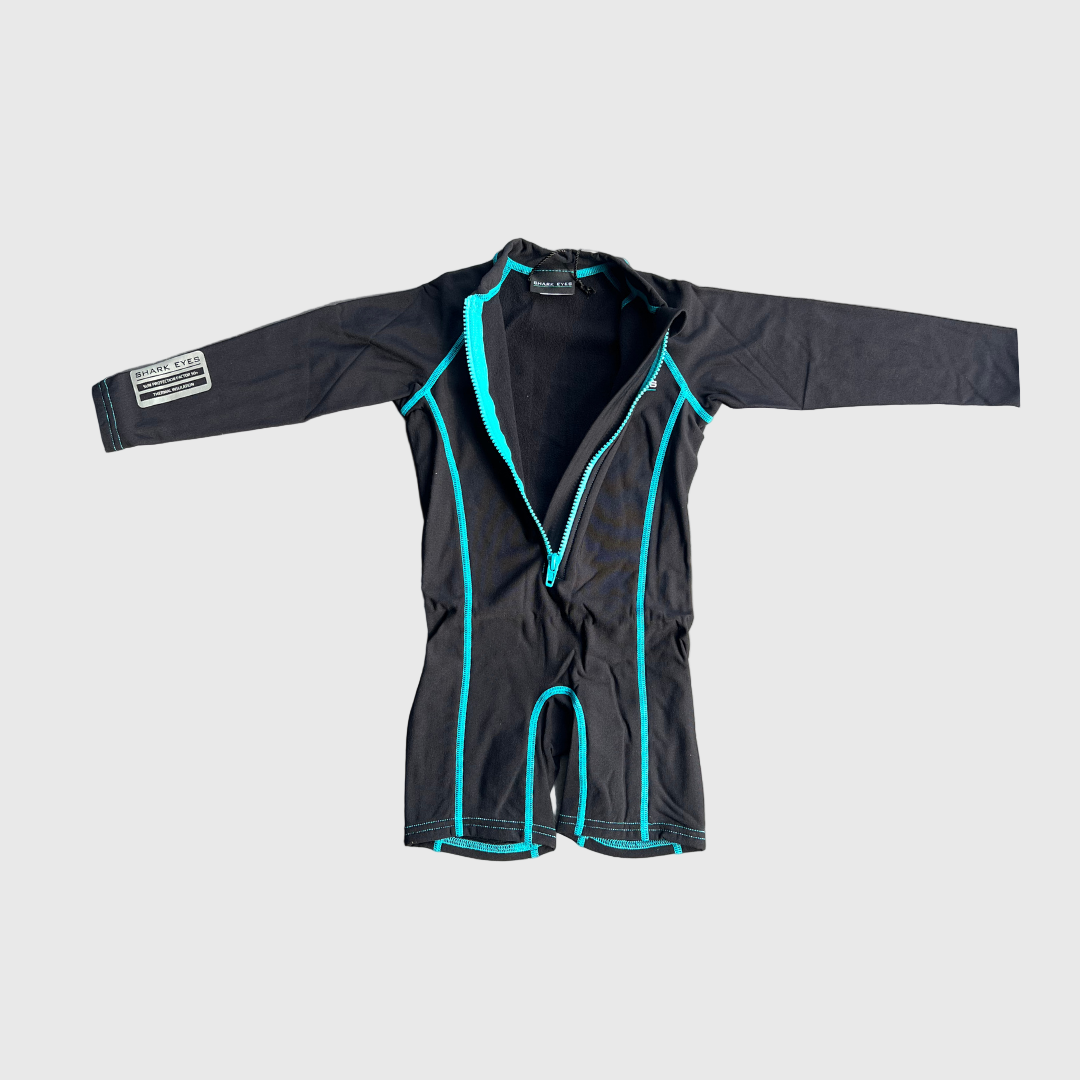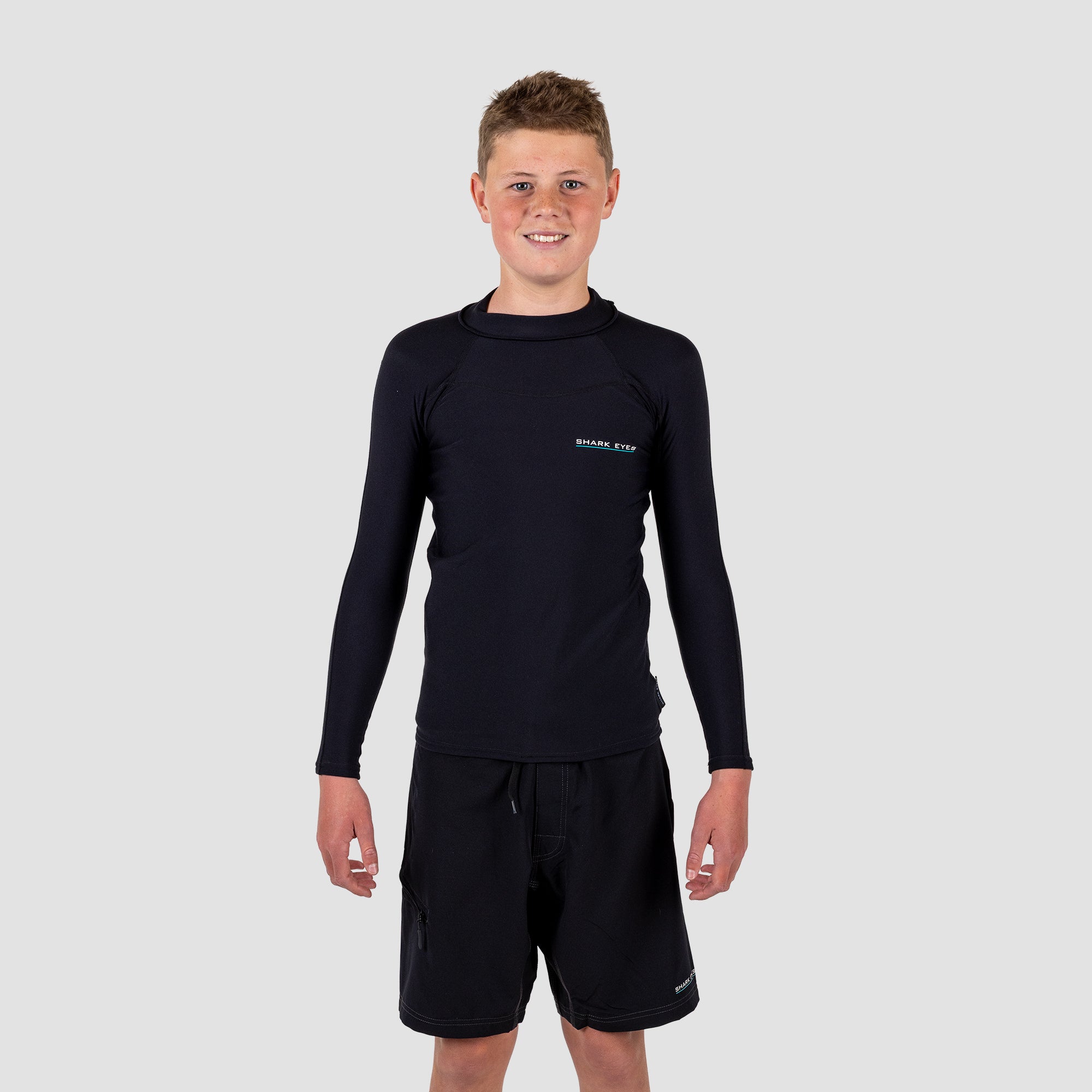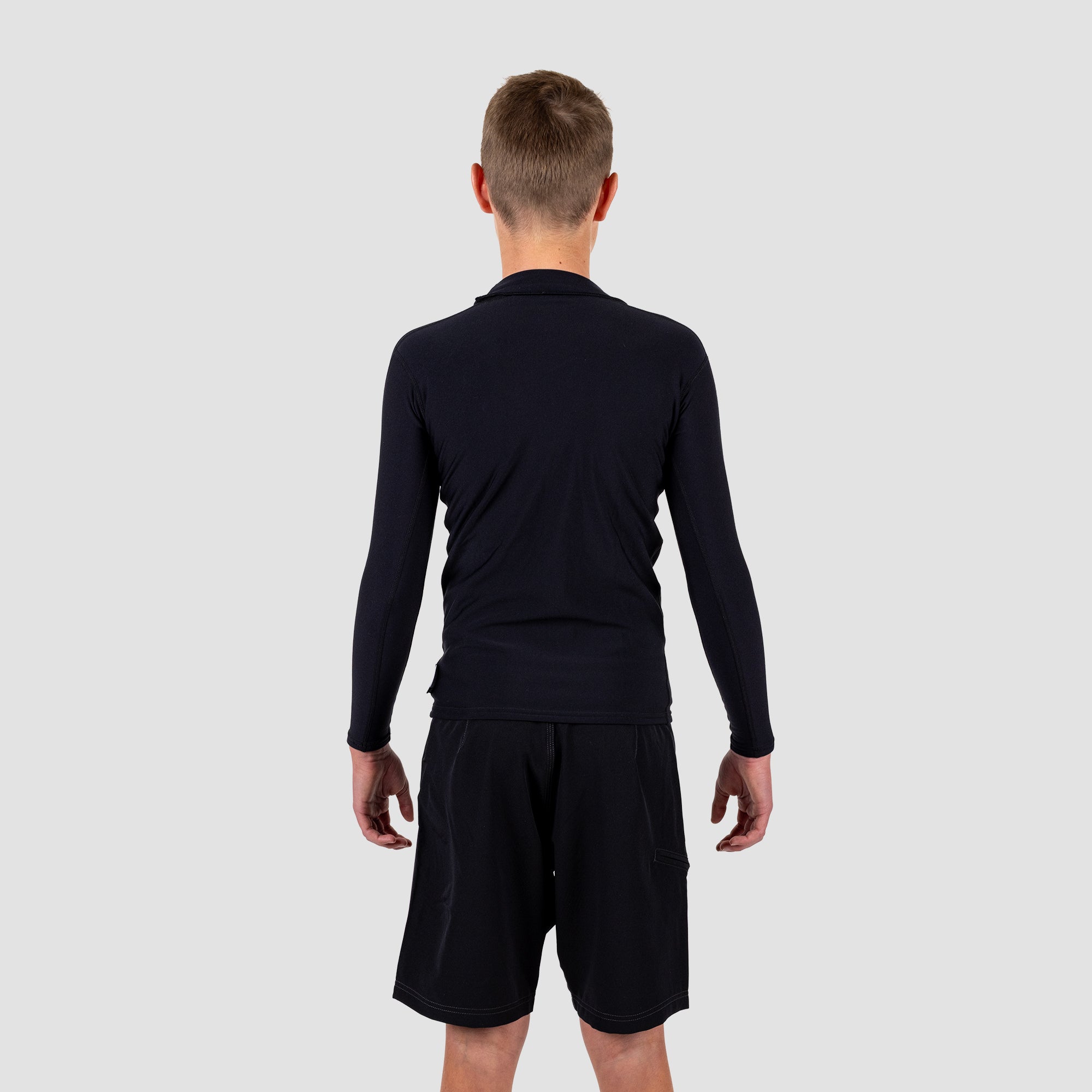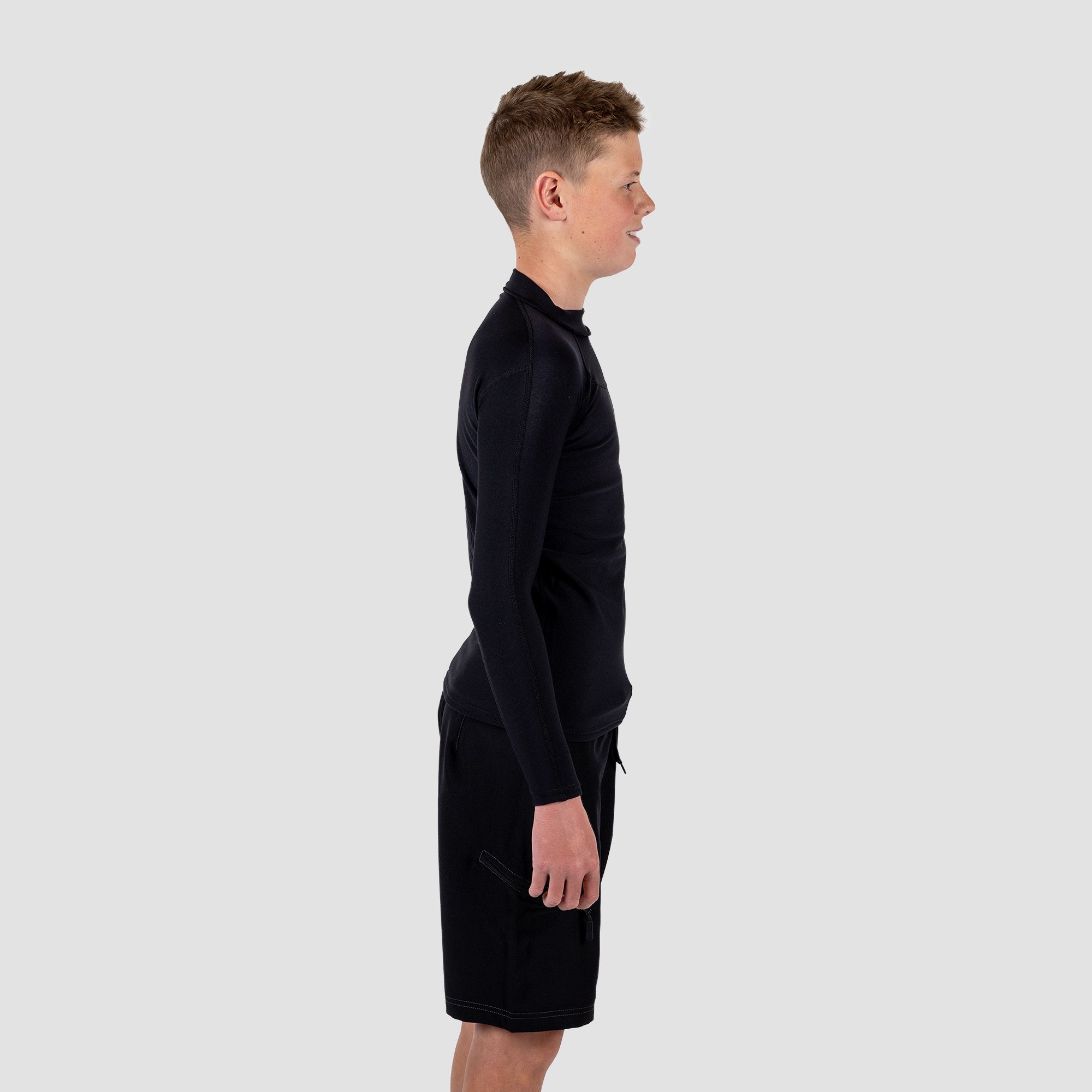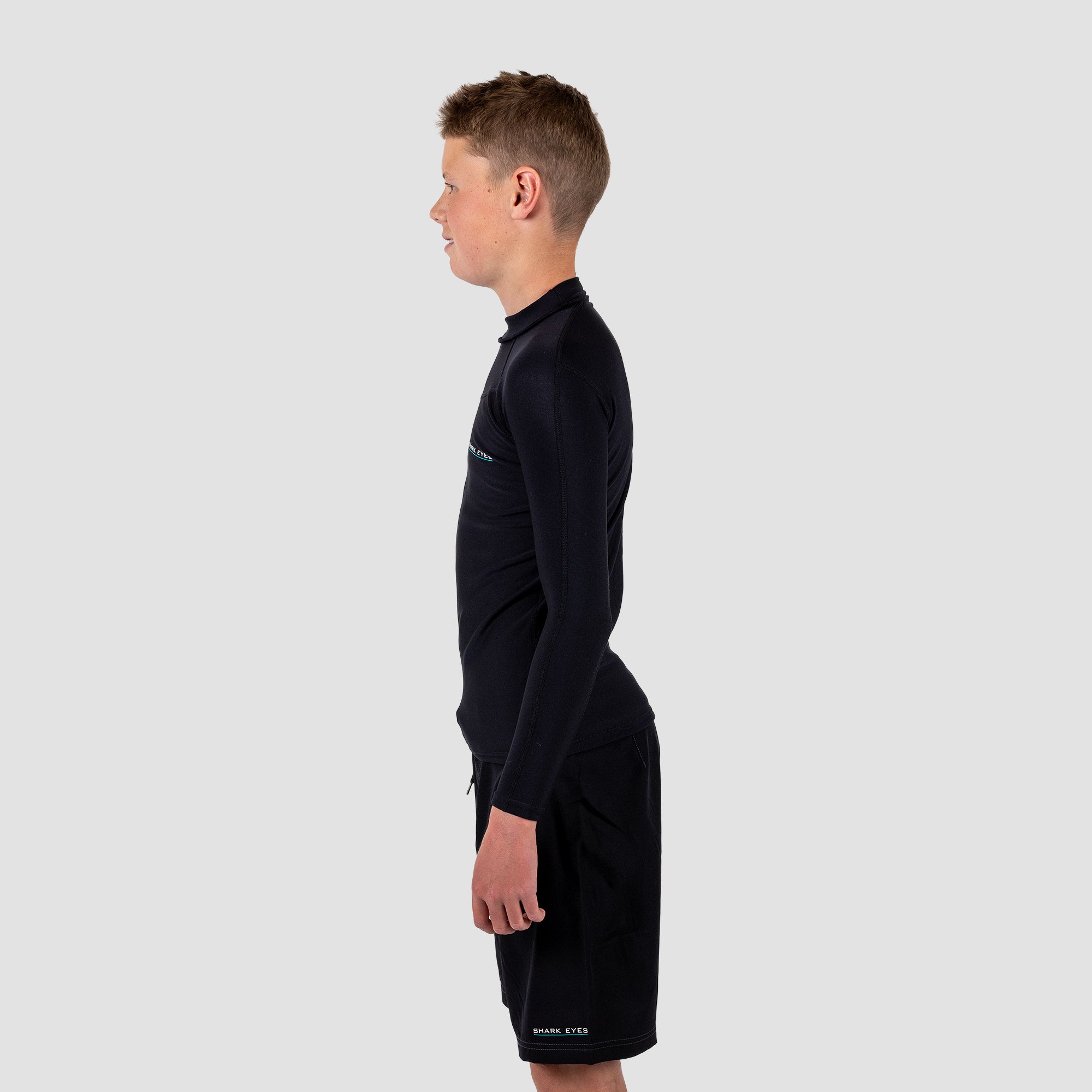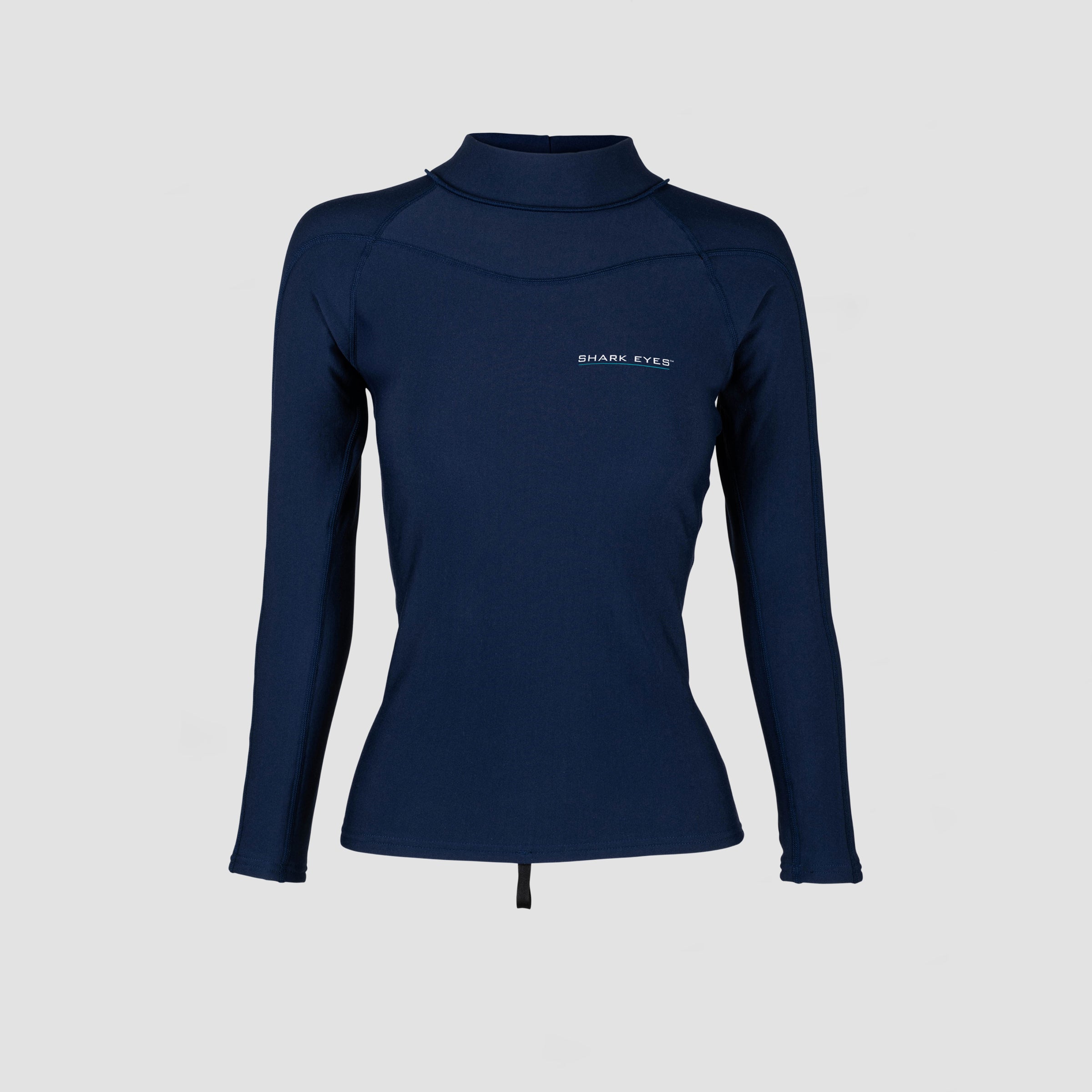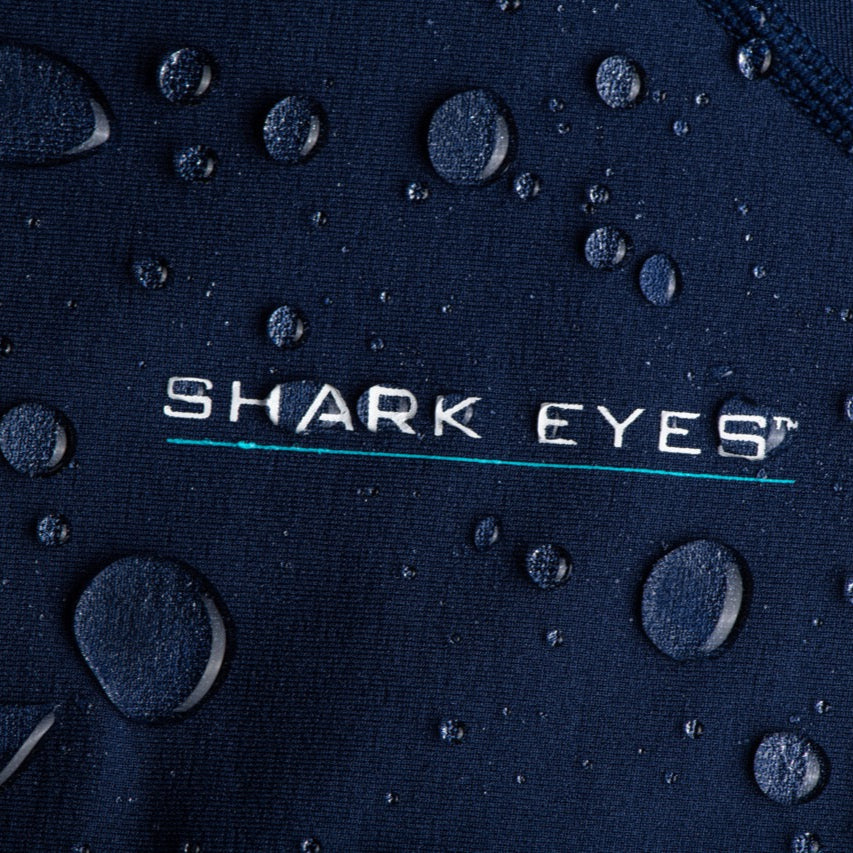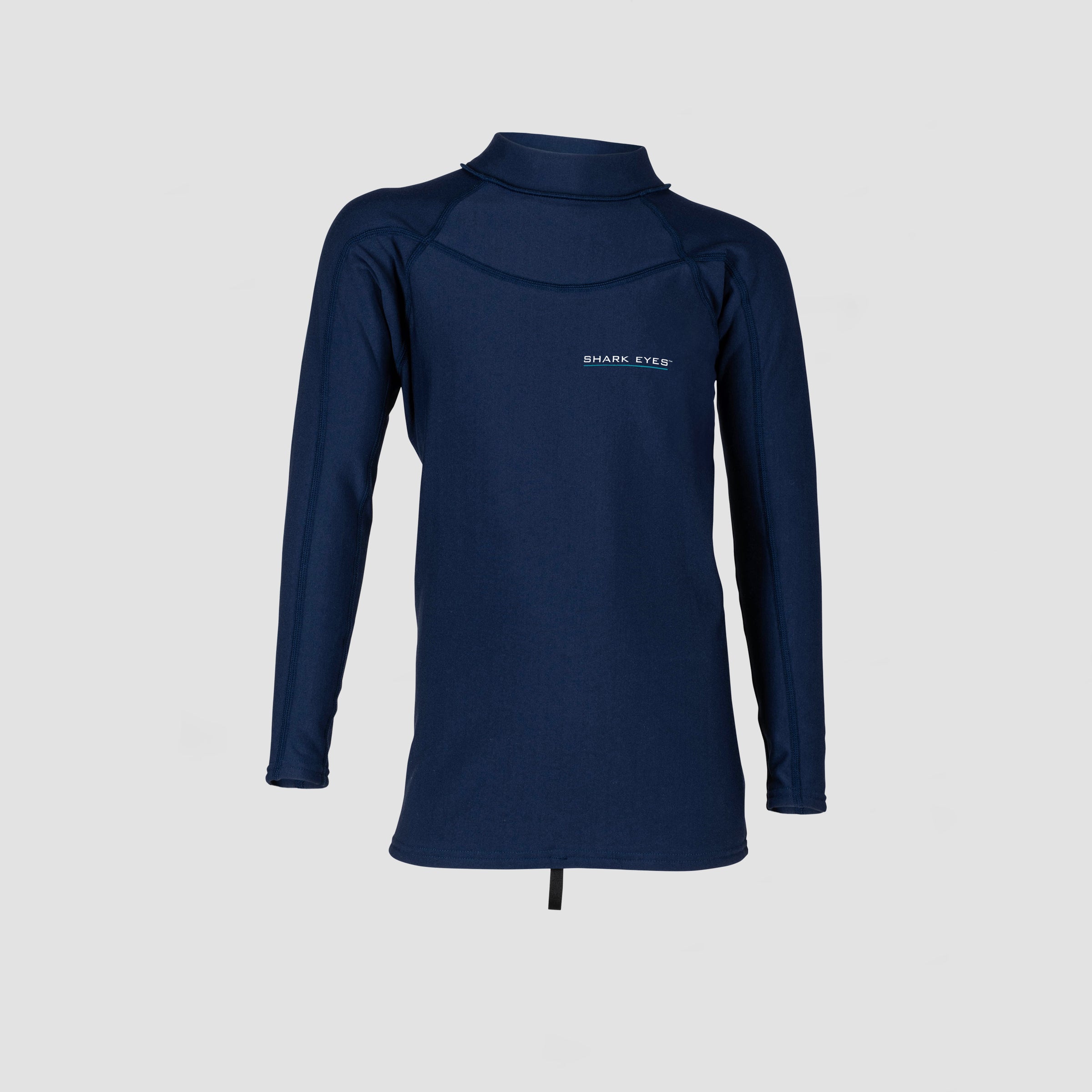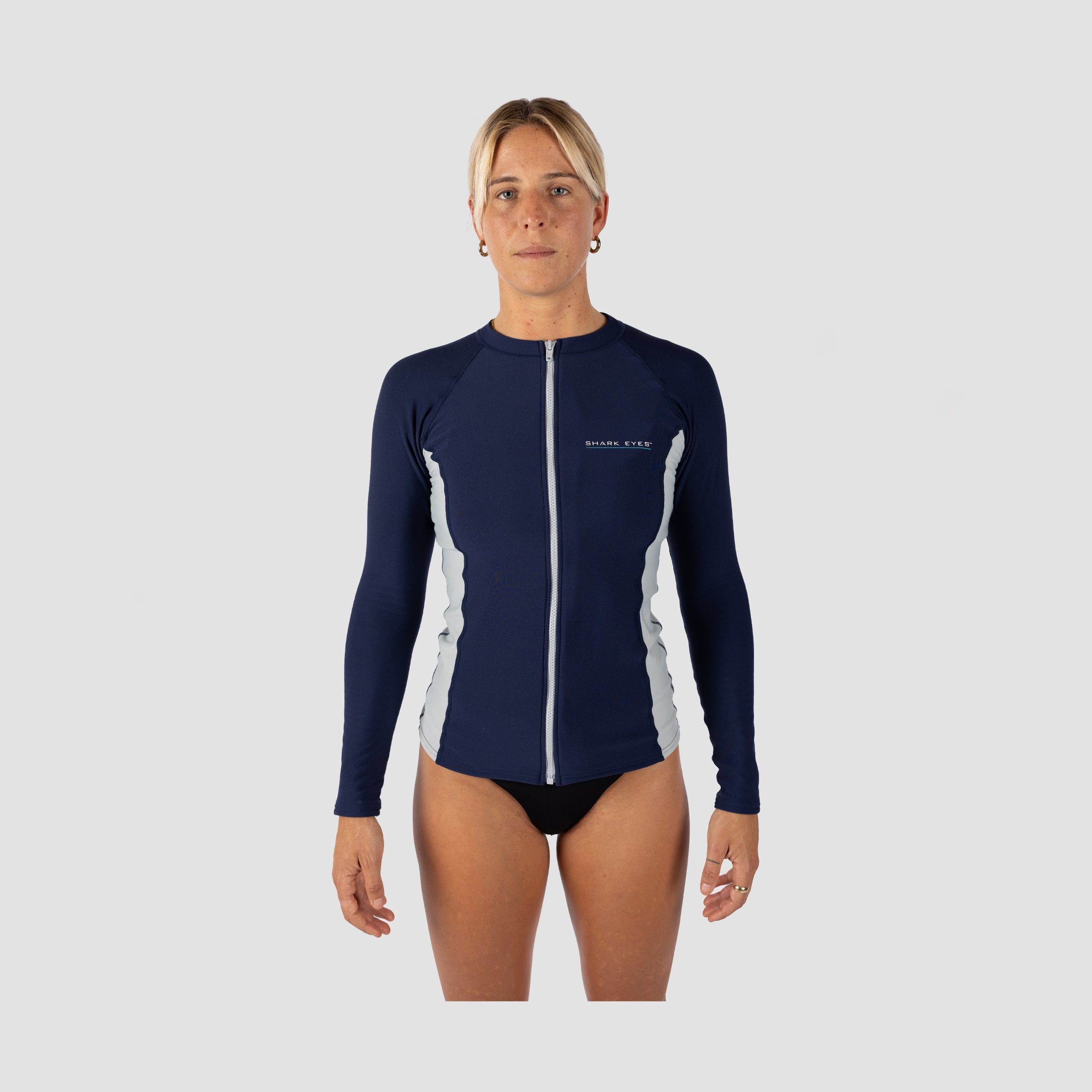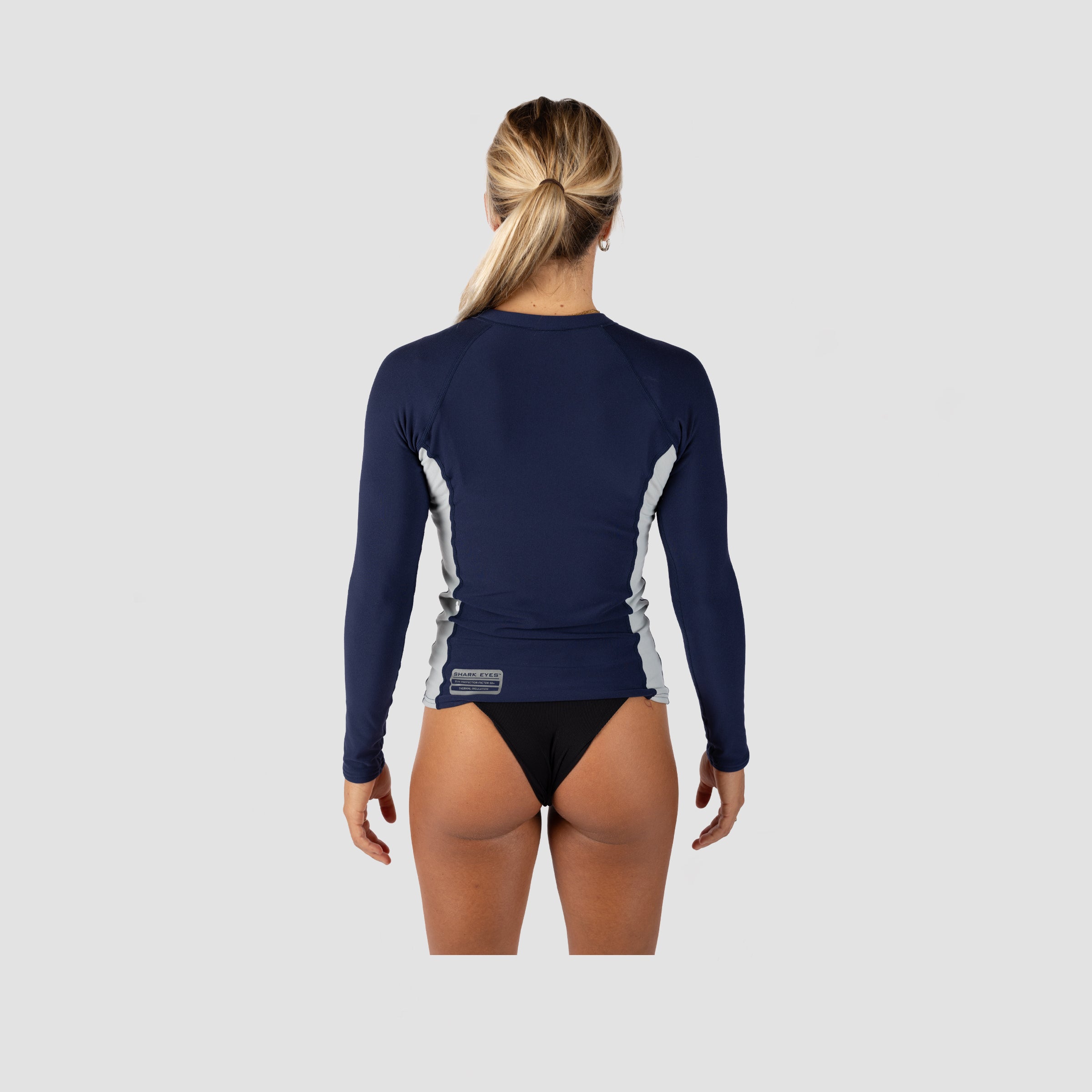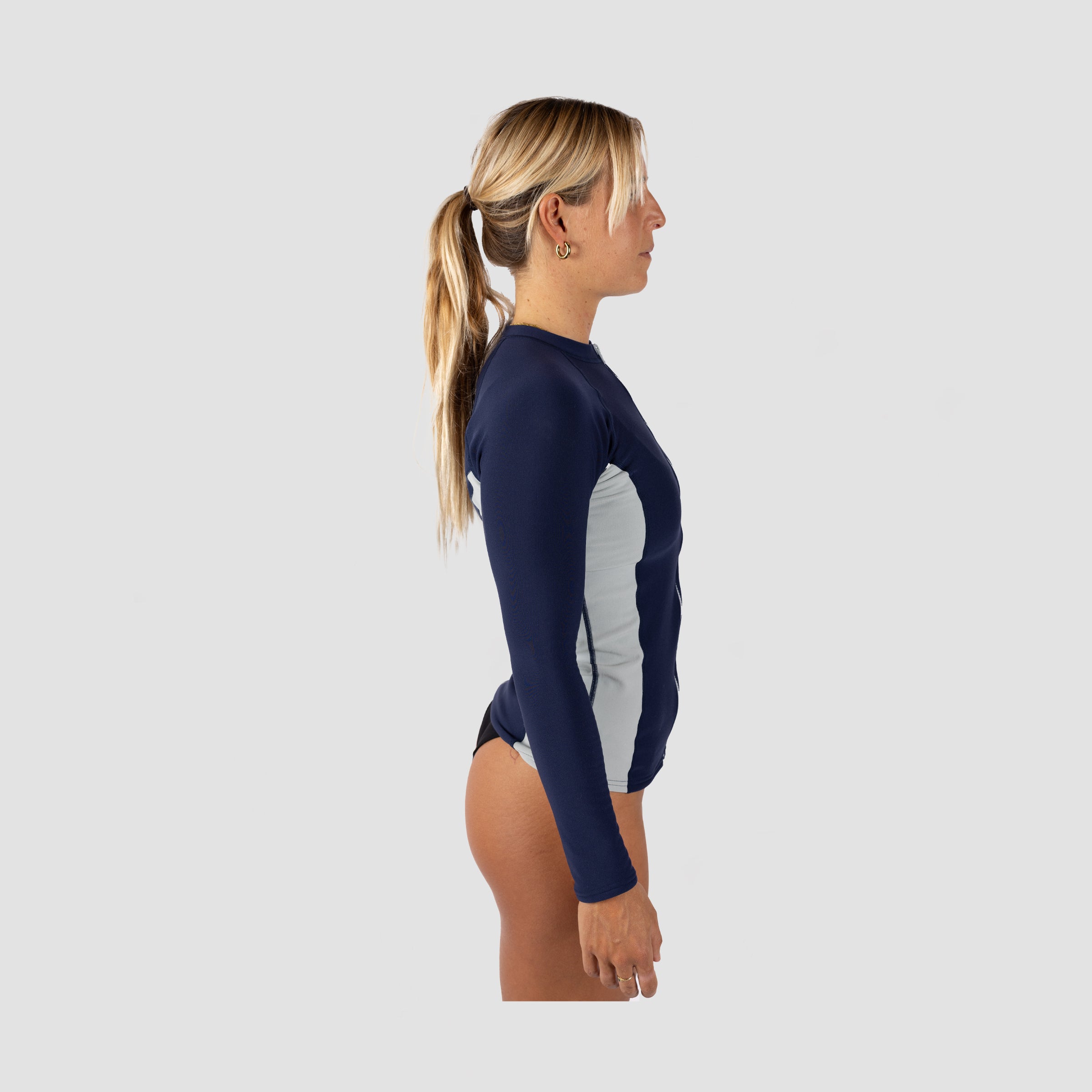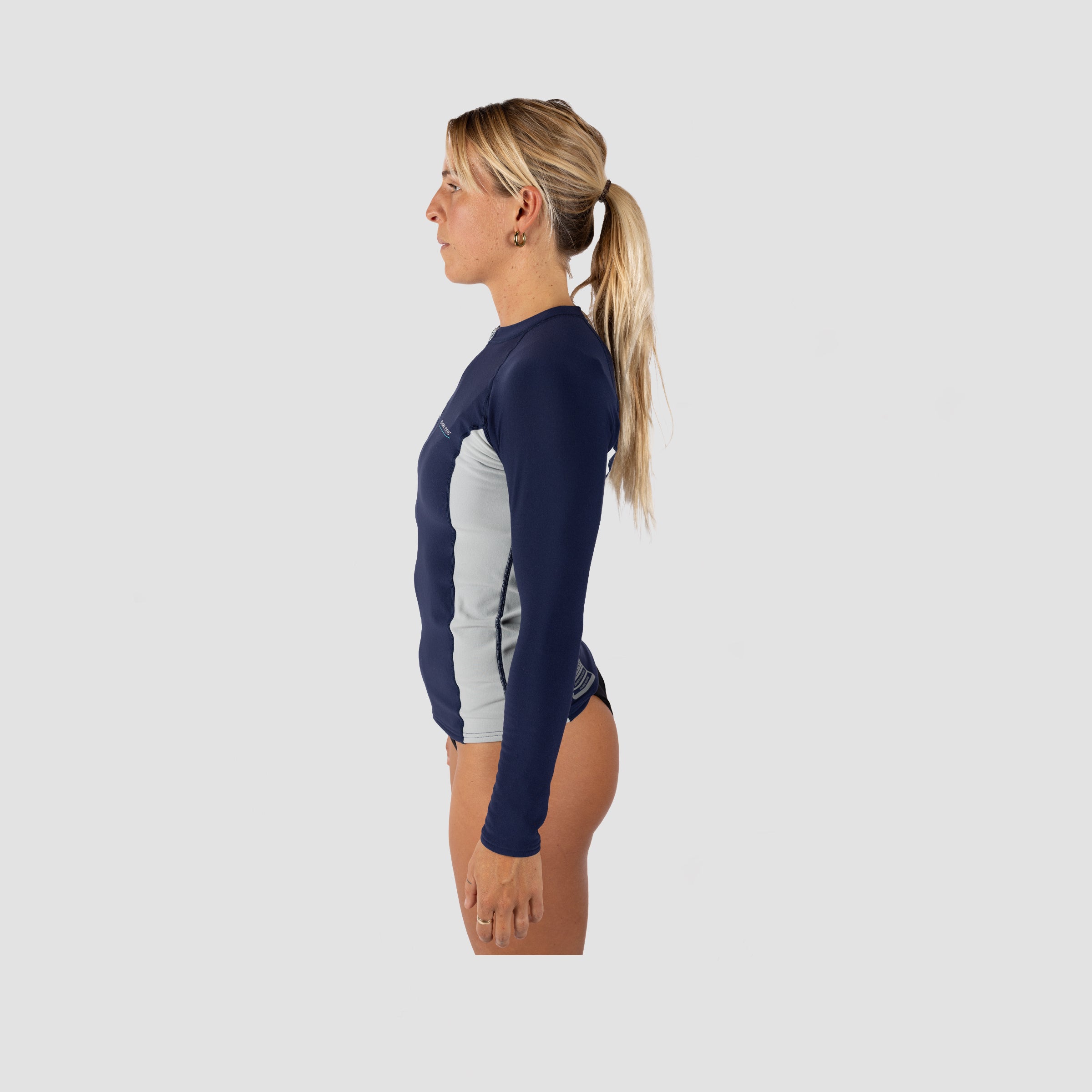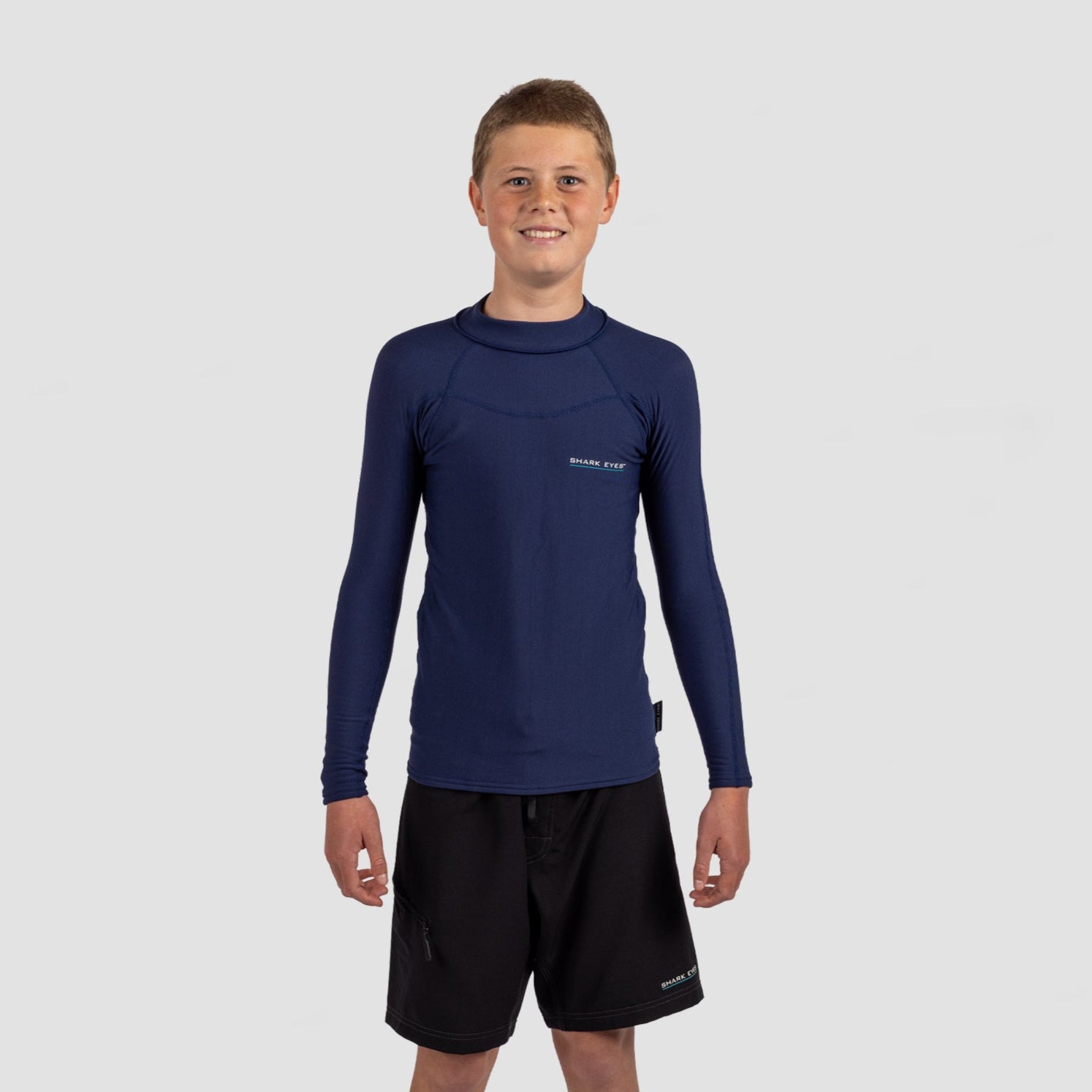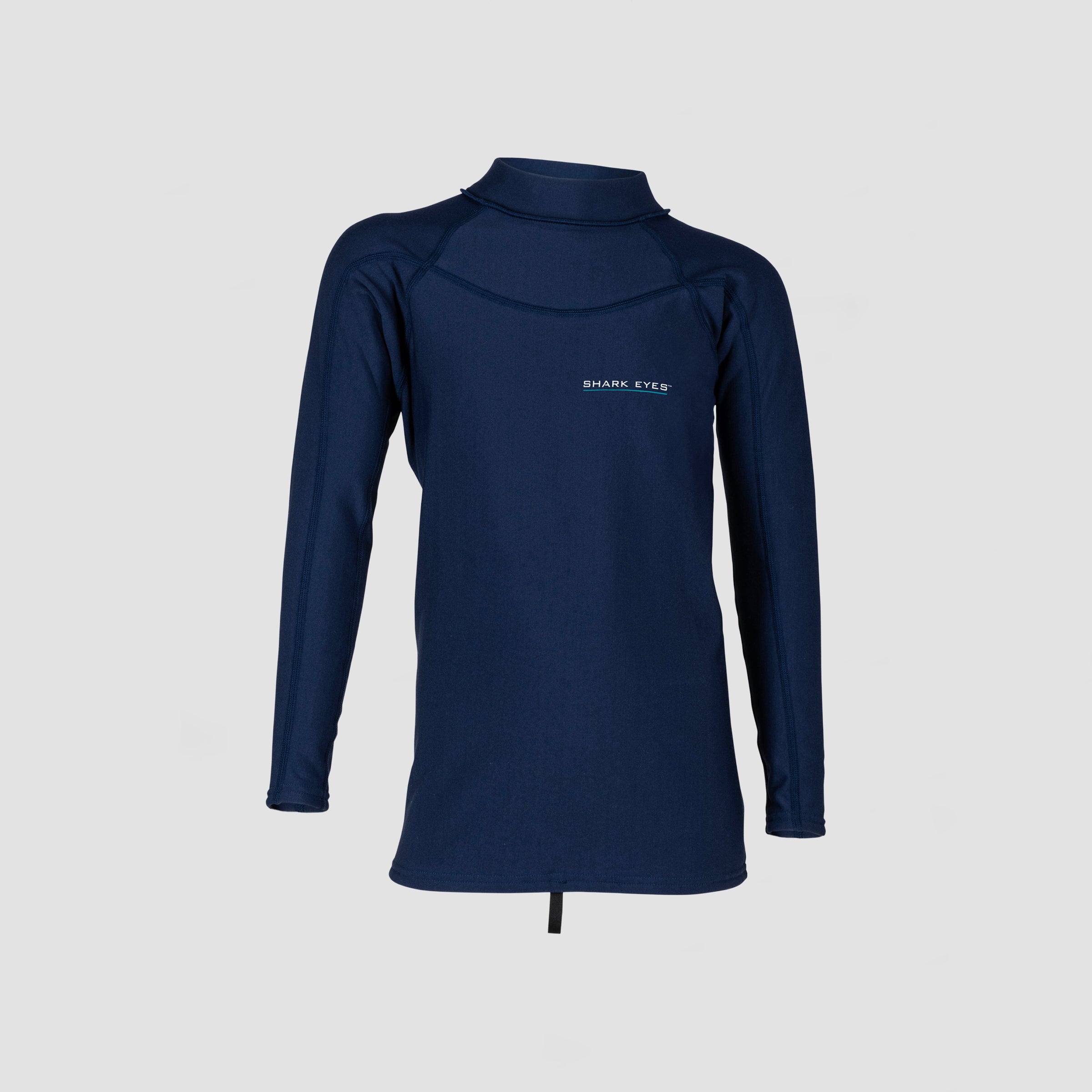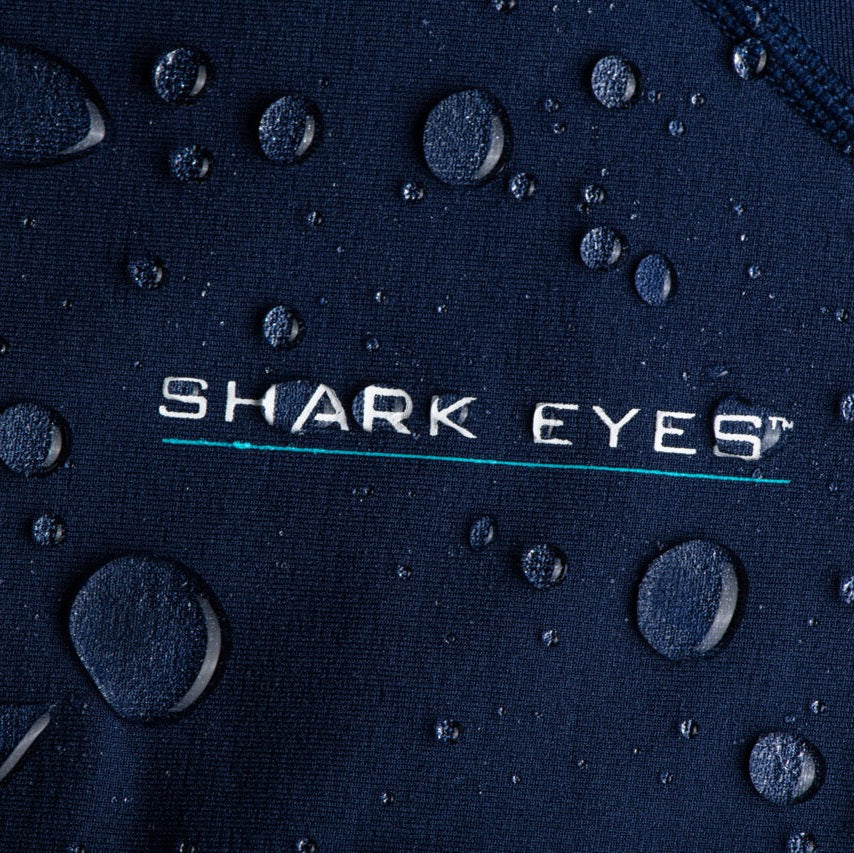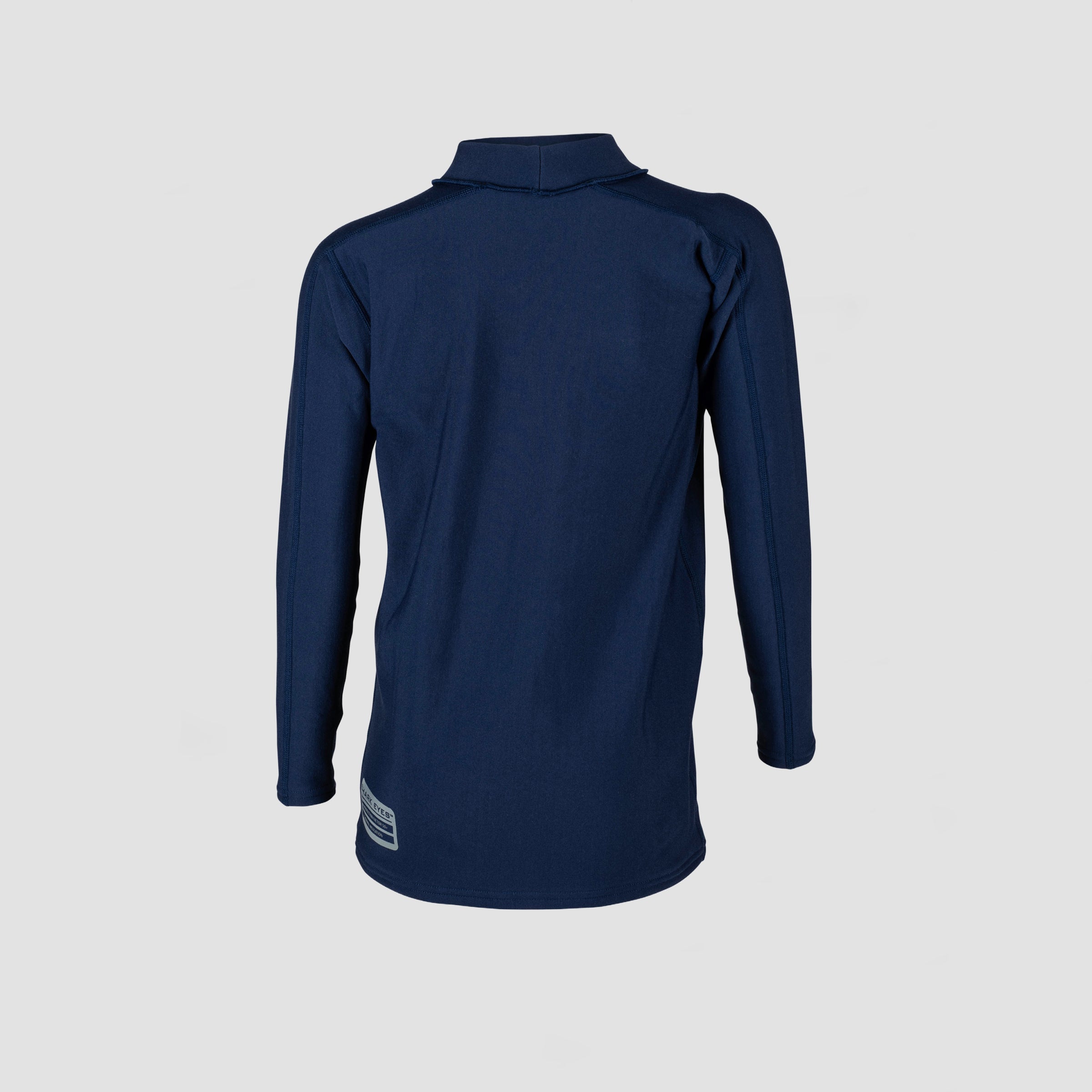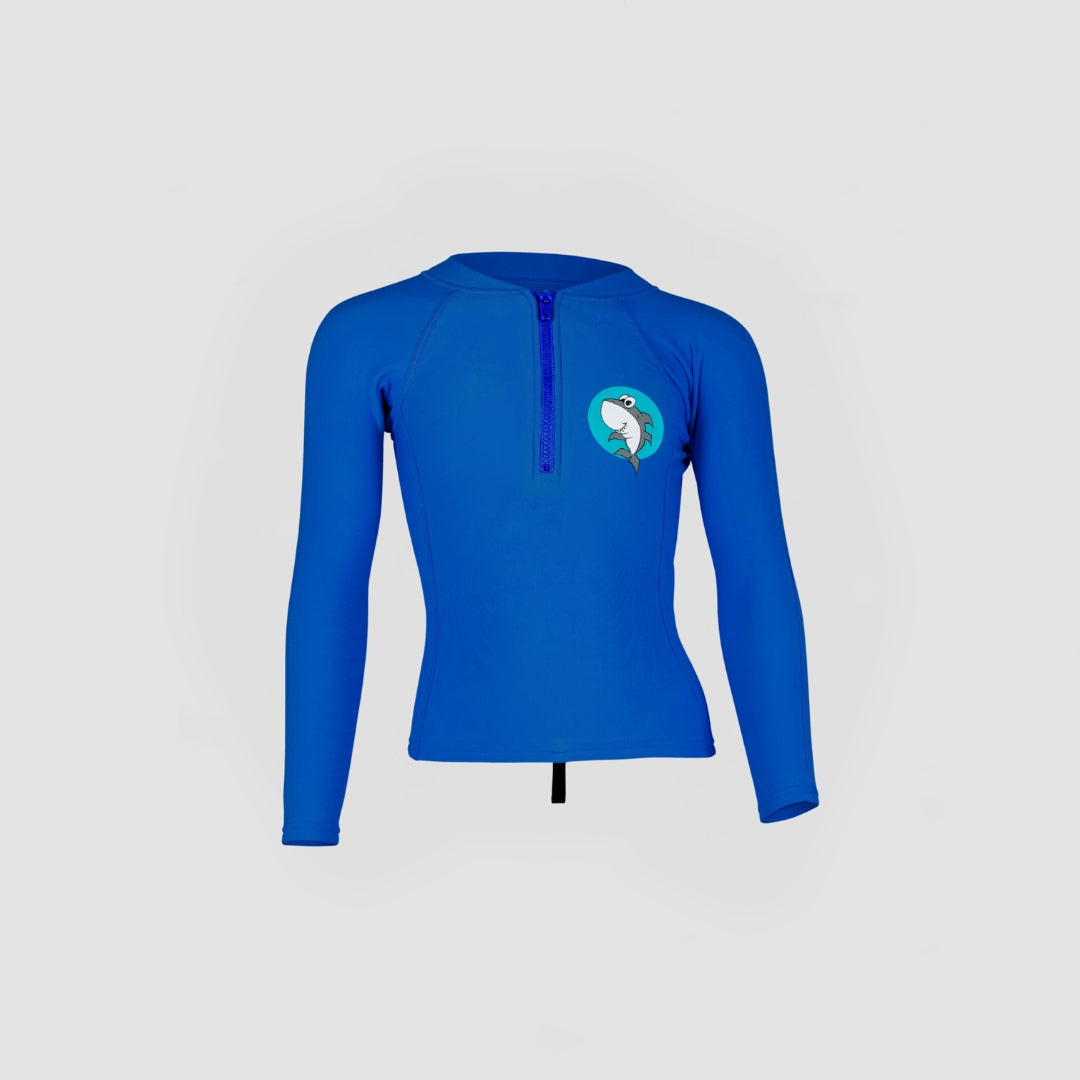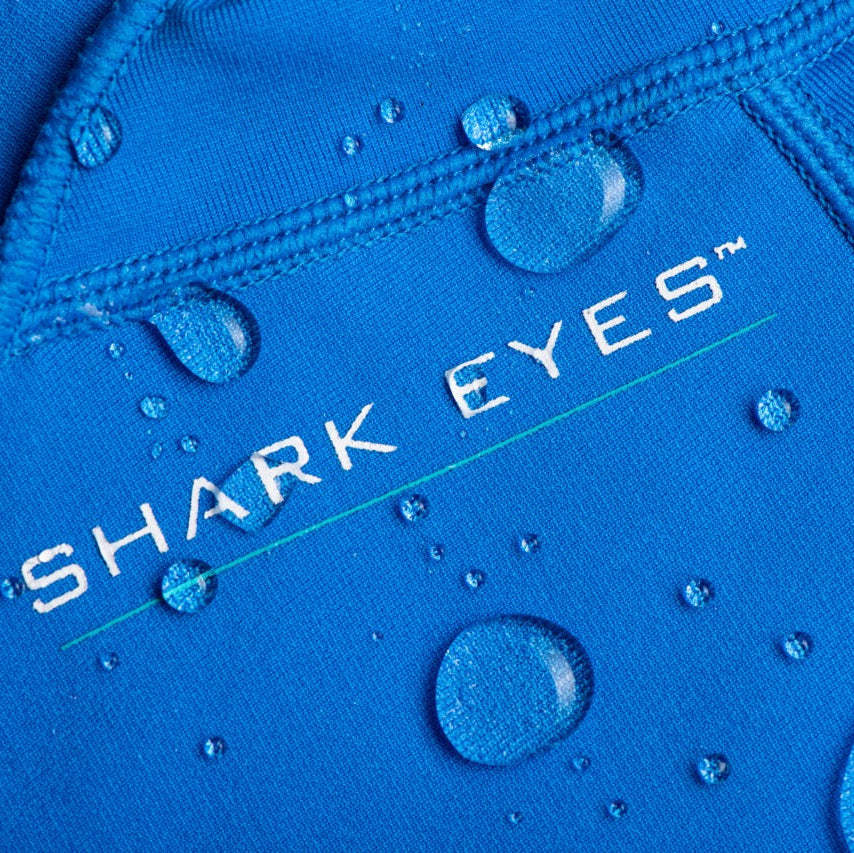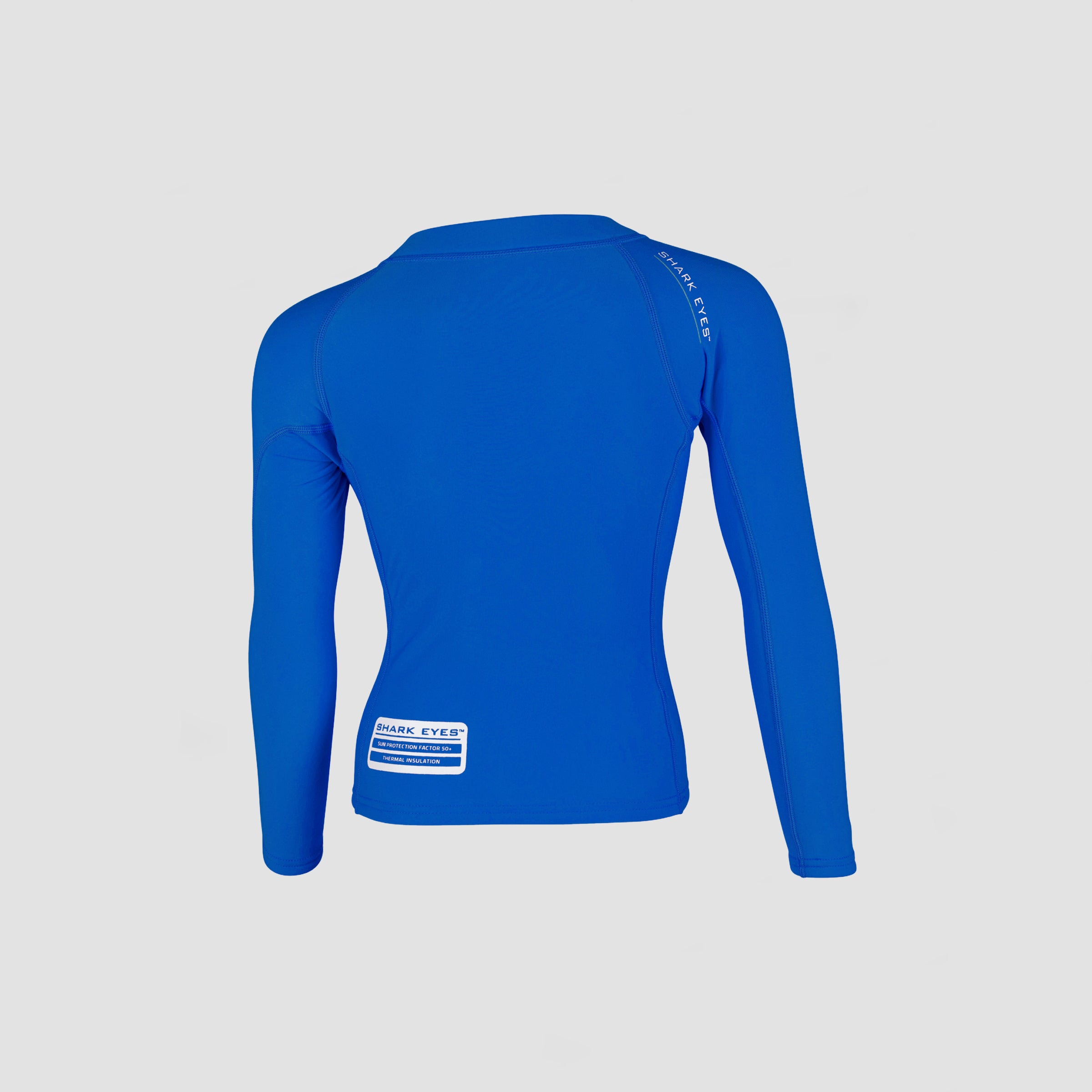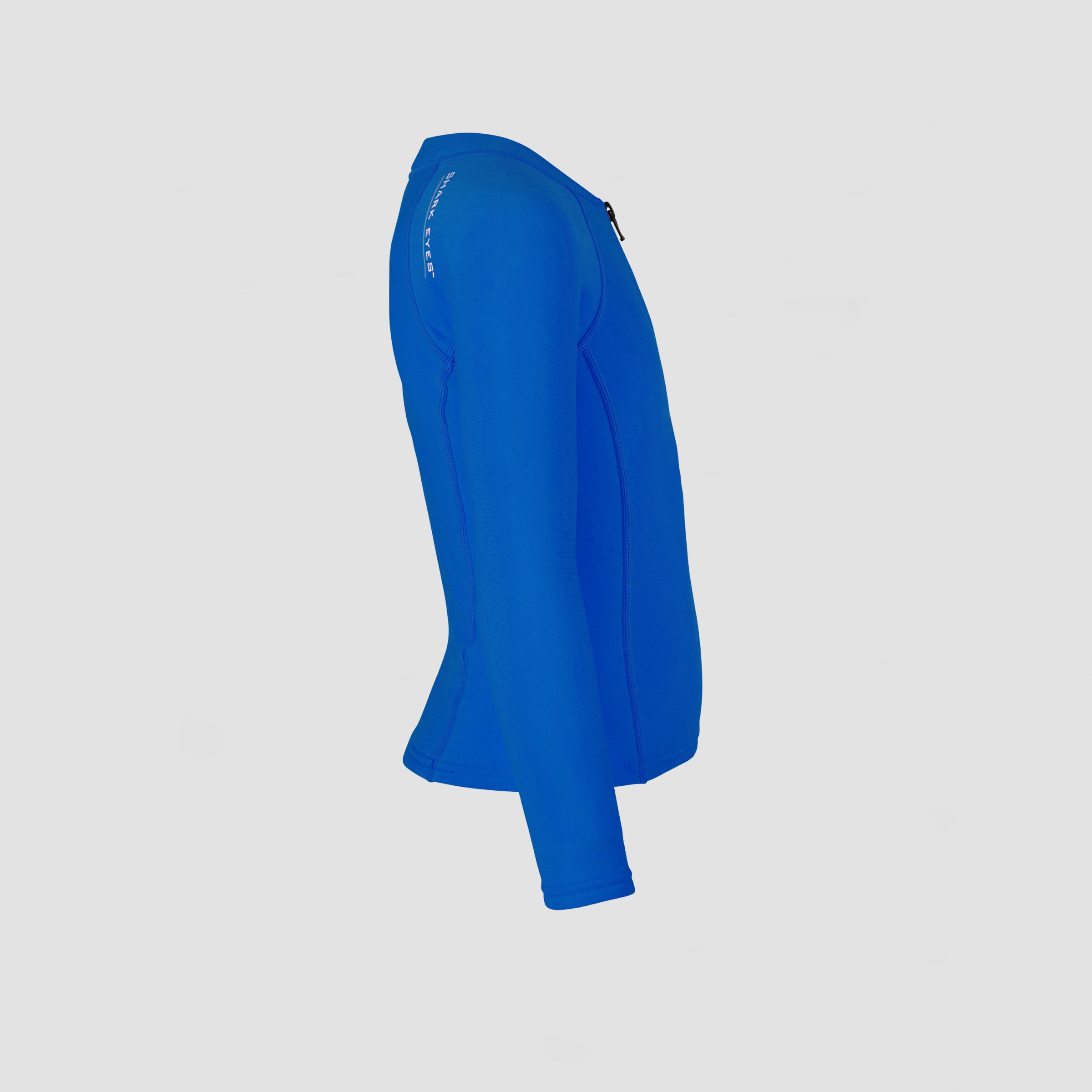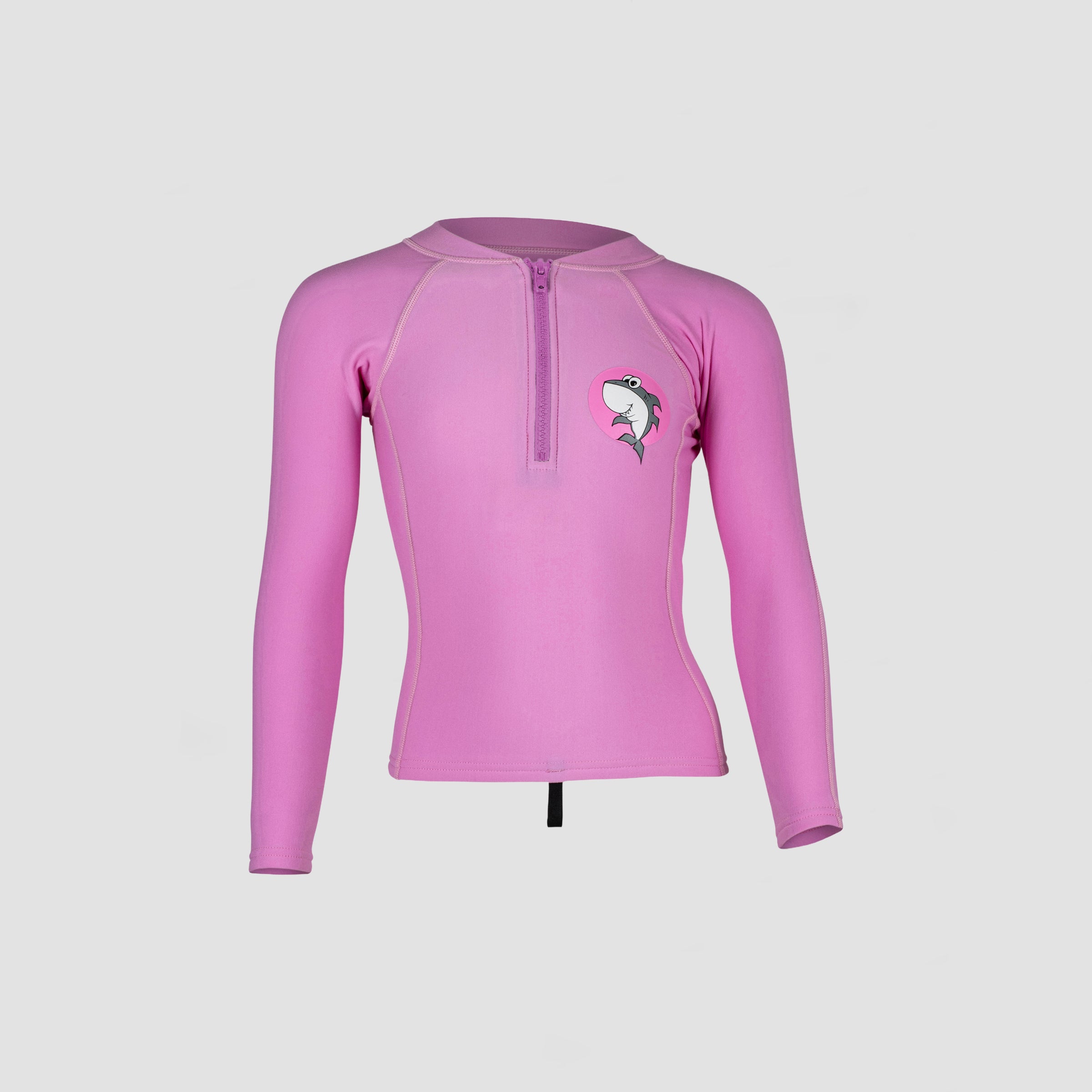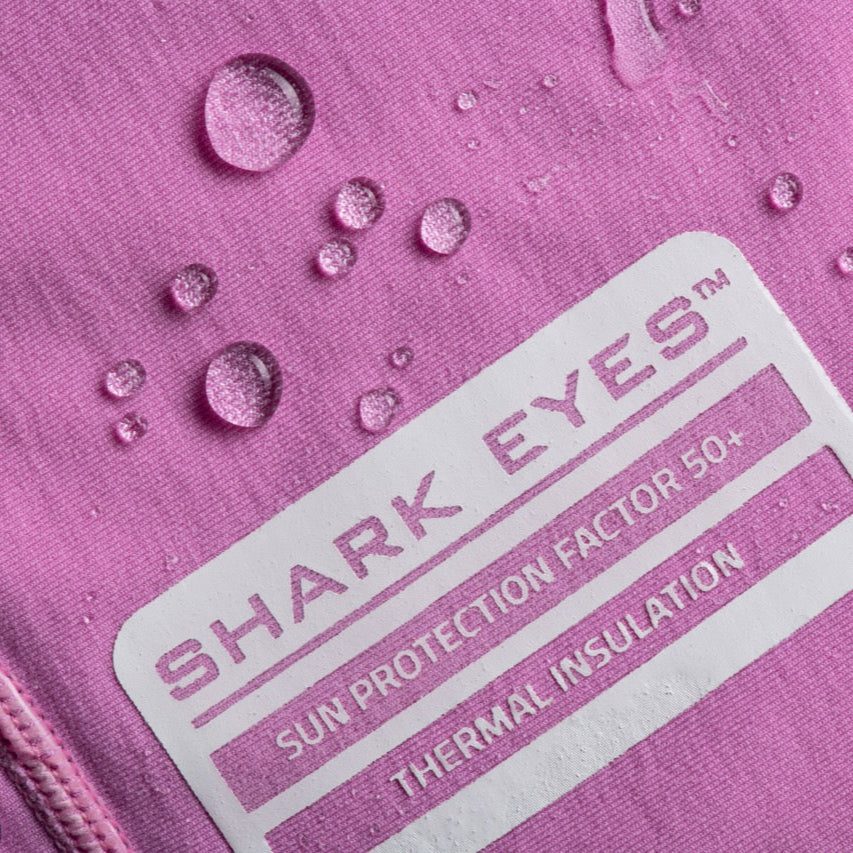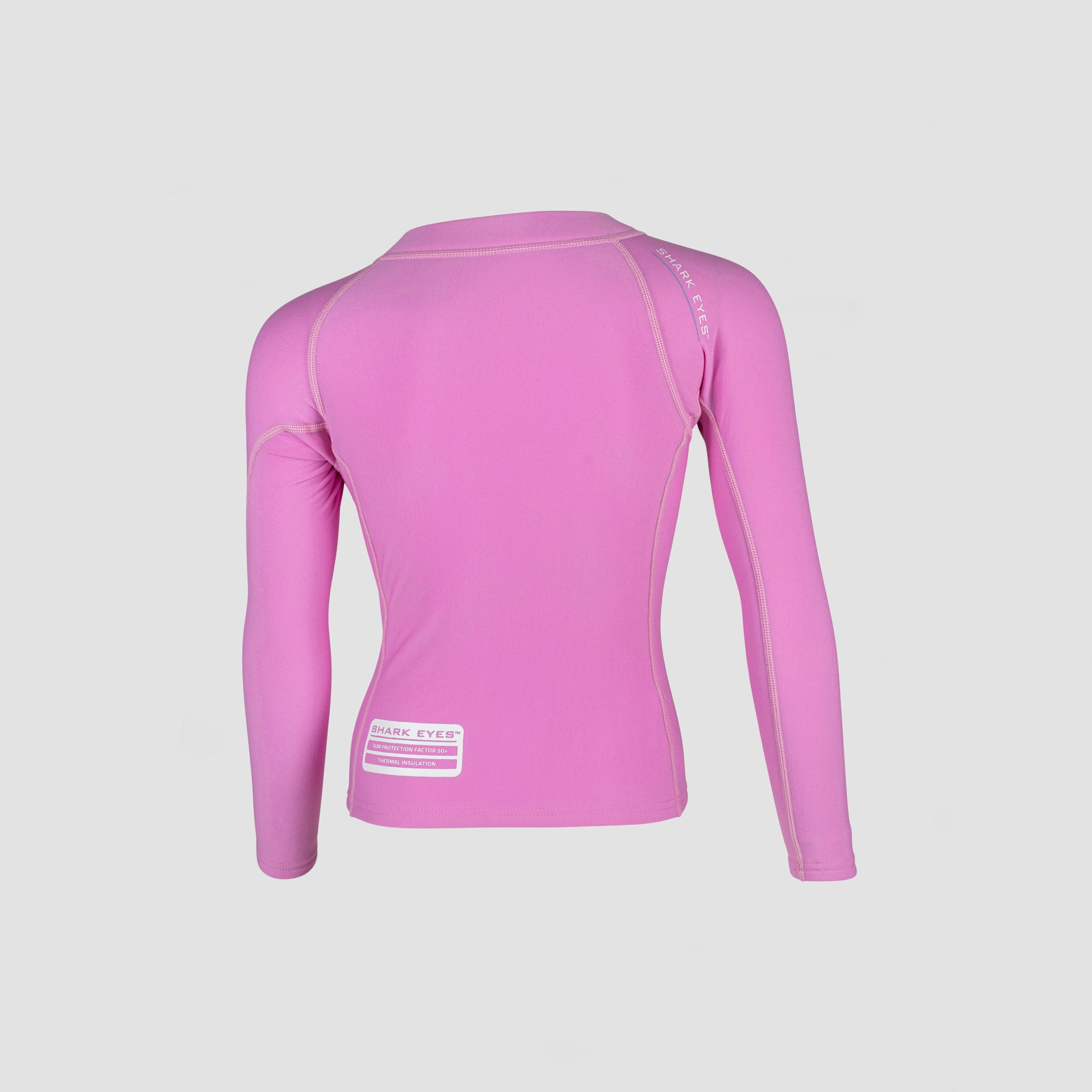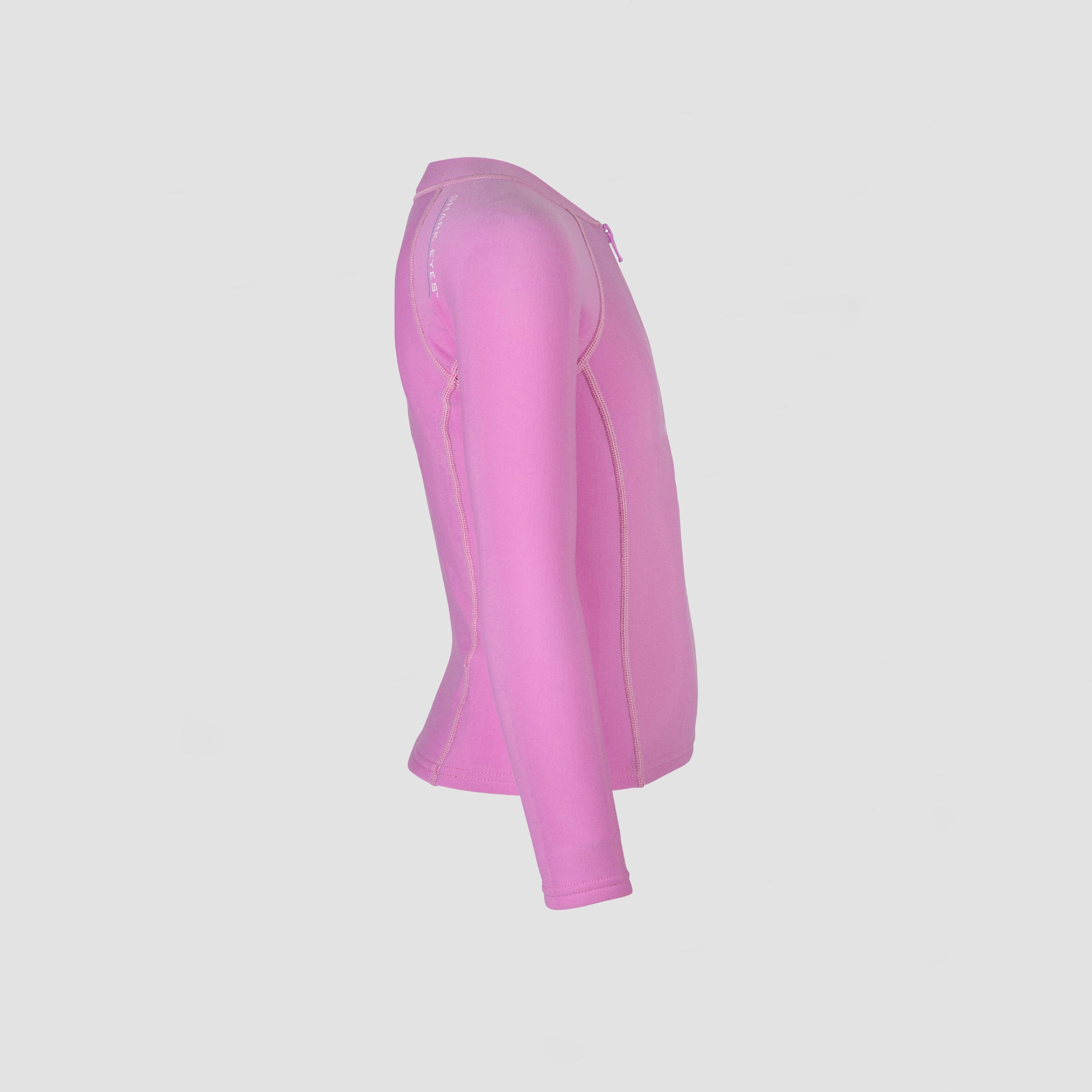Thermal Rash Vests Frequently Asked Questions:
1. Do thermal rash vests work?
Yes — they absolutely do. Thermal rash vests add an extra layer of warmth thanks to their polyfleece lining, which traps heat even when wet. Unlike thin lycra rashies, they resist wind-chill and stay warm in and out of the water.
2. How is a thermal rash vest different from a regular rash vest?
Standard rashies are made from lycra, which quickly becomes soggy and cold. Our thermal rash vests use hydrophobic nylon fleece — water beads straight off, the inner fleece feels like a warm garment, and it stays comfortable even when wet.
3. Can I wear a thermal rash vest on its own or under a wetsuit?
Both. It’s ideal as a standalone top in mild conditions (around 18–24°C water) or layered under a wetsuit for an extra 1mm of insulation in colder water.
4. Should a rash vest be tight or loose?
It should fit snug but not restrictive. A close fit prevents flushing (cold water entering between layers) and ensures better warmth retention and sun protection.
5. Is it warmer to wear a rash vest under a wetsuit?
Yes. A thermal rash vest under your wetsuit adds warmth and comfort, reduces neoprene rub, and makes it easier to slip in and out of your suit.
6. Is it suitable for all water sports?
Absolutely. Designed for surfing, diving, foiling, spearfishing, swimming, and paddling — it moves with your body while offering warmth, comfort, and UV protection.
7. Is it suitable for chlorine pools?
Yes. The hydrophobic nylon fleece is chlorine-resistant and more durable than lycra rashies. Many parents use our thermal rash vests for kids’ swimming lessons.
8. Does it offer UV protection?
Yes — our thermal rash vests provide UPF 50+ sun protection, blocking 98% of harmful UV rays while also cutting wind-chill.
9. How should I wash my thermal rash vest?
Rinse in fresh water after every session. For deeper cleaning, use a cold machine wash on a gentle cycle. Avoid hot water, harsh detergents, and tumble drying.
10. Will it stretch out or lose shape over time?
No — the 4-way stretch fleece retains shape and performance even after repeated wear, rinsing, and sun exposure.
11. Are rash vests worth it?
Definitely. They protect you from sun, rashes, and wind-chill, and the thermal version extends your time in the water through the colder months — making it one of the best-value and most-versatile pieces of ocean gear you can own.
13. What’s the best material for a rash vest?
For warmth and comfort, hydrophobic nylon fleece with a polyfleece lining is unbeatable. It’s fast-drying, soft on skin, and far more durable than basic lycra.































